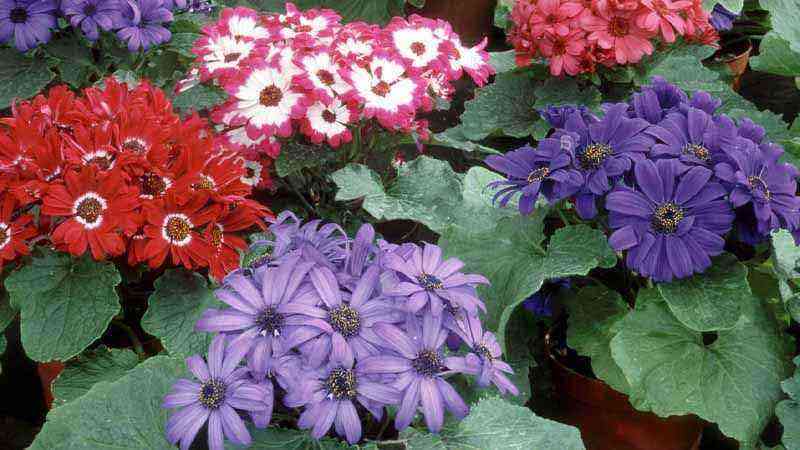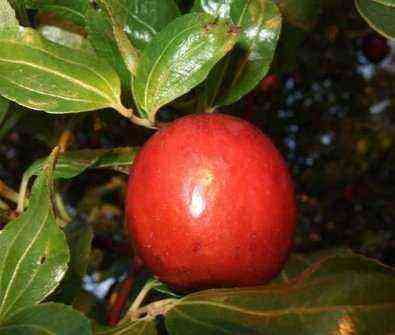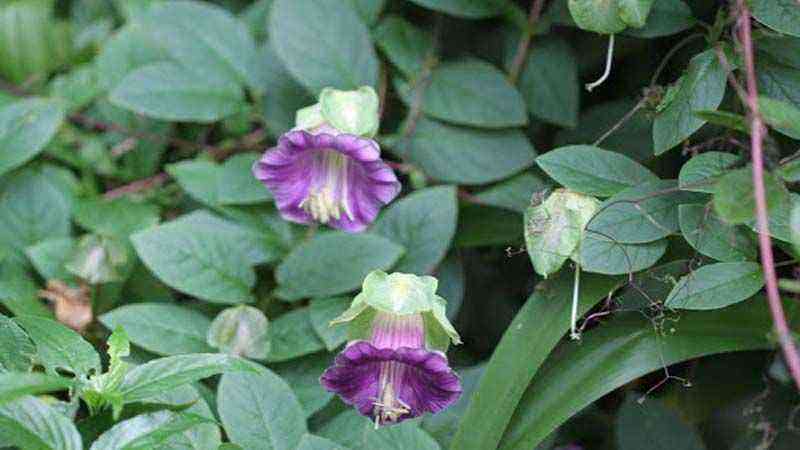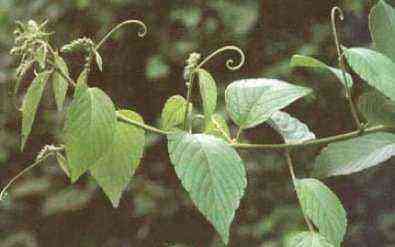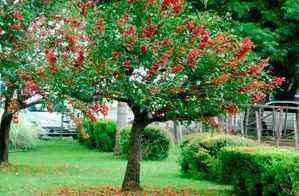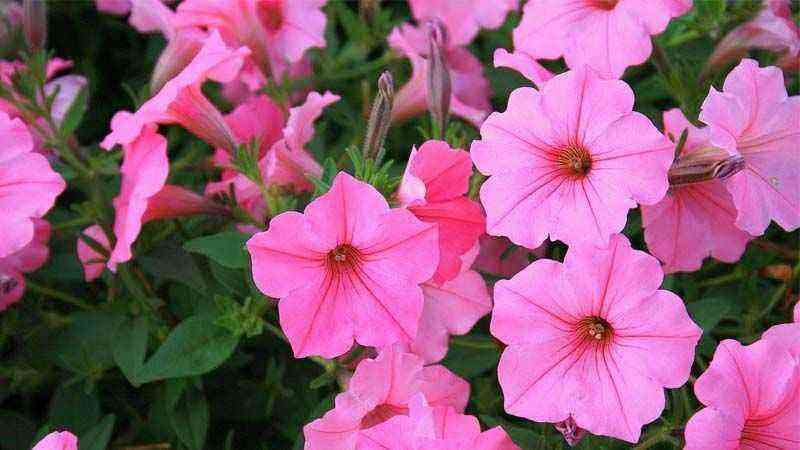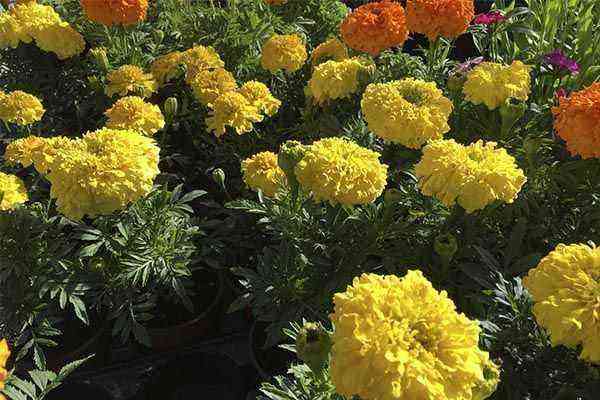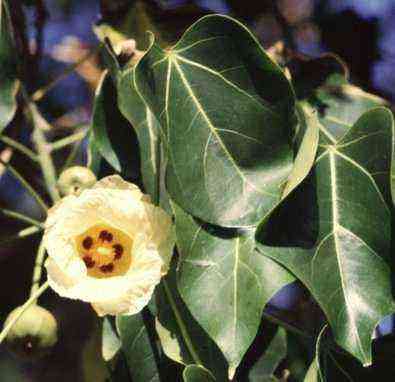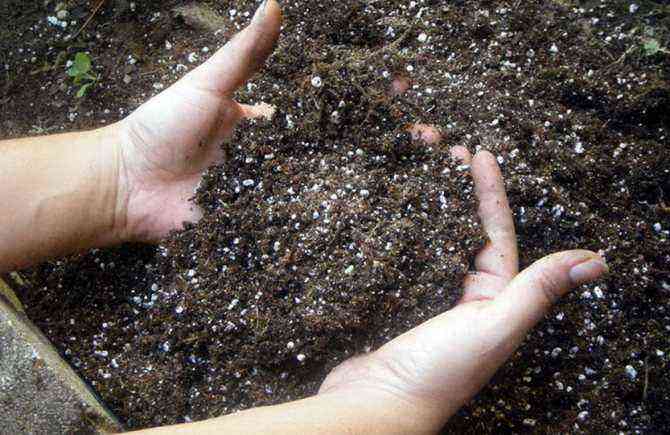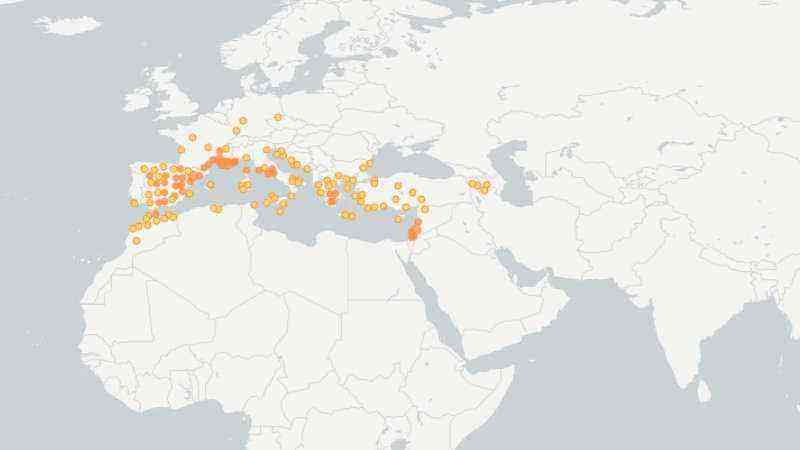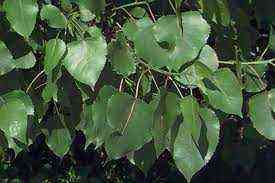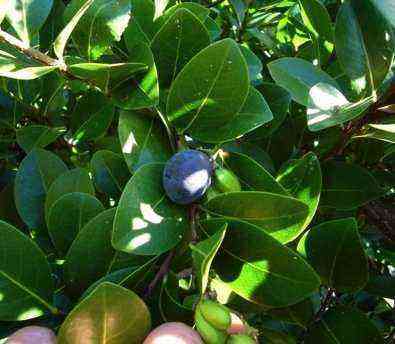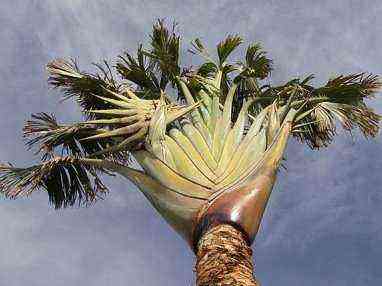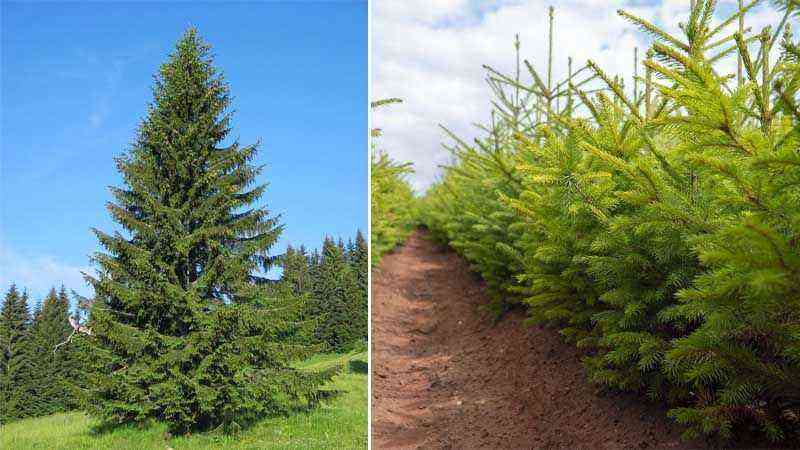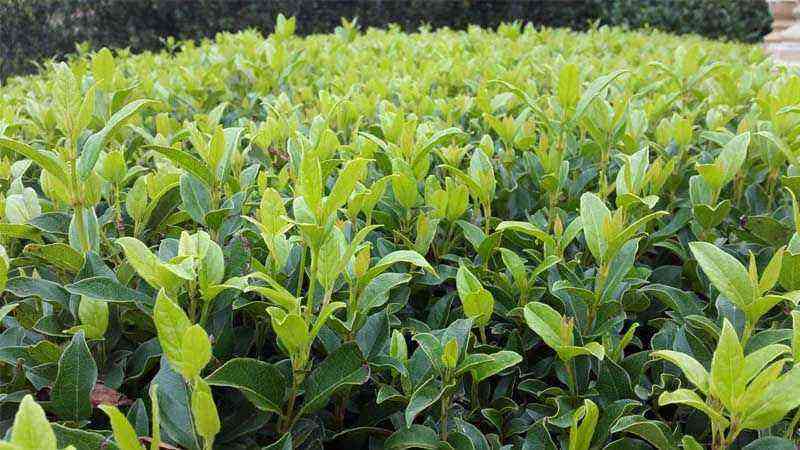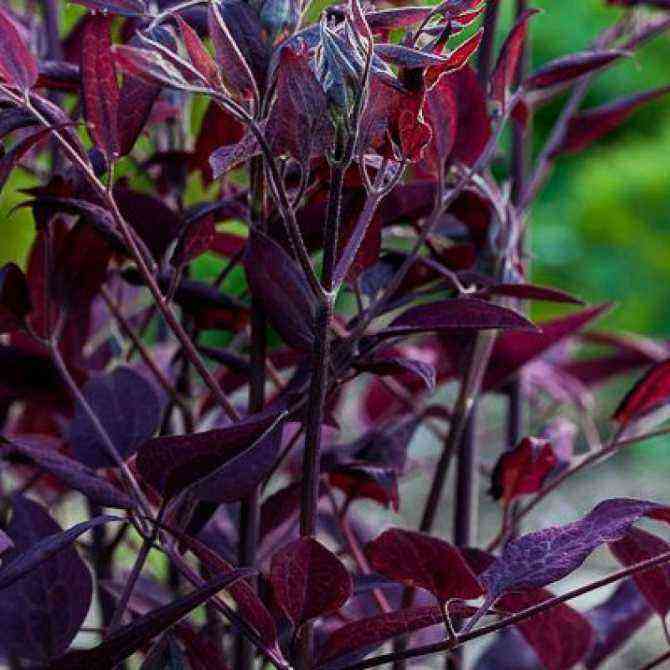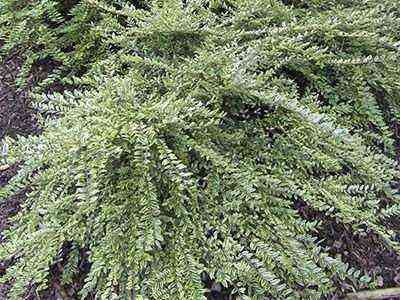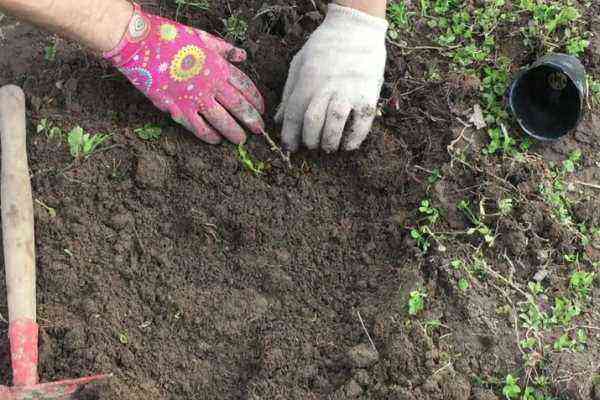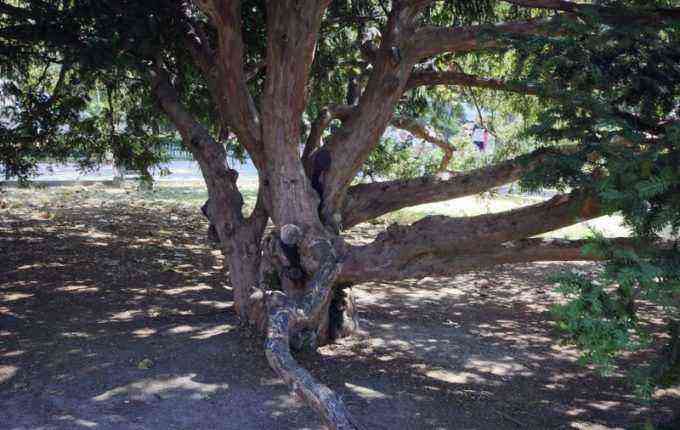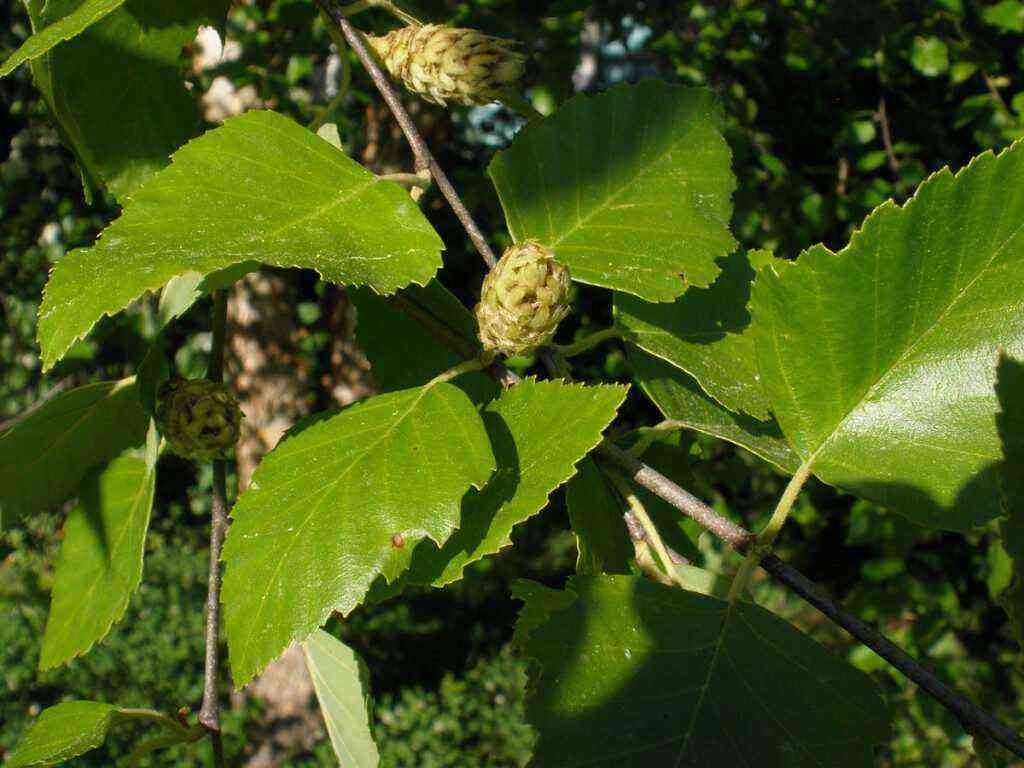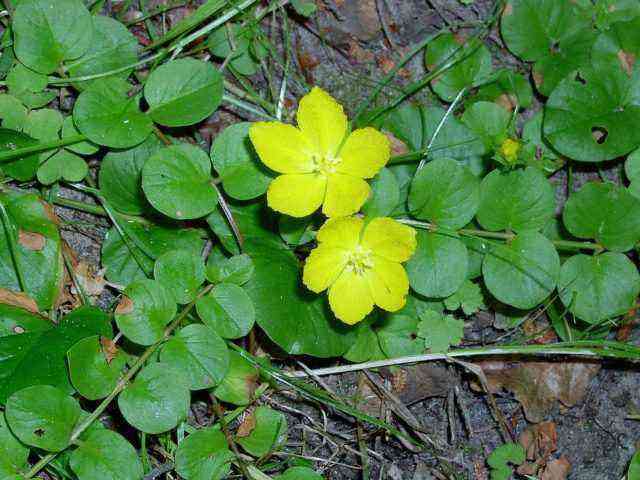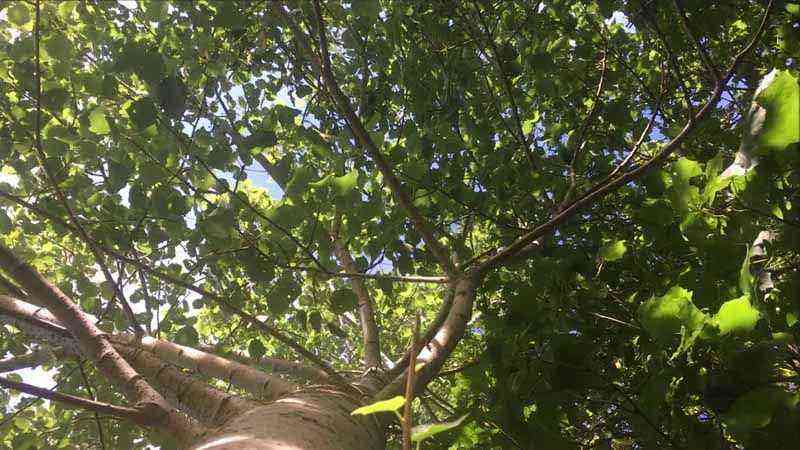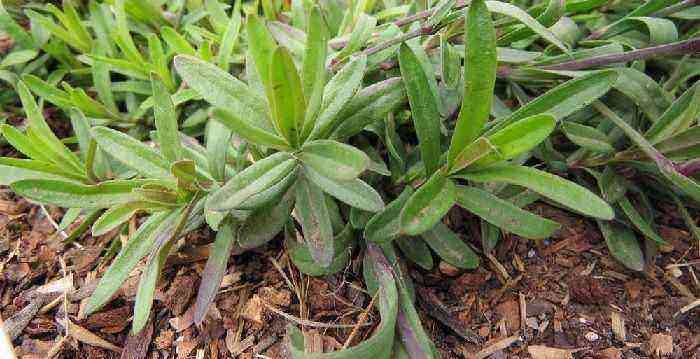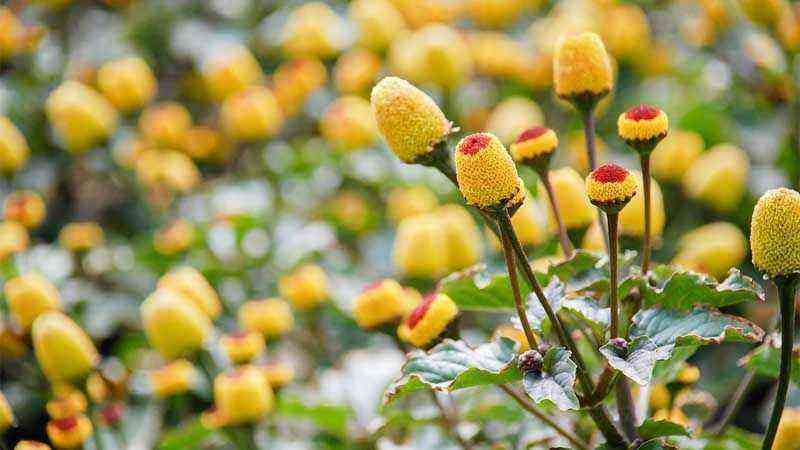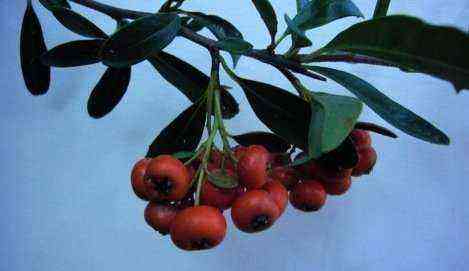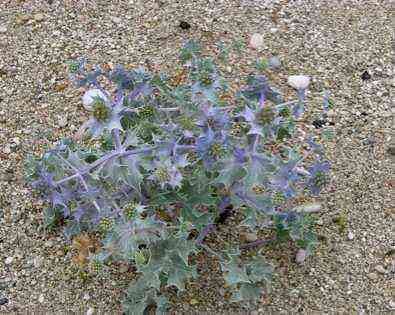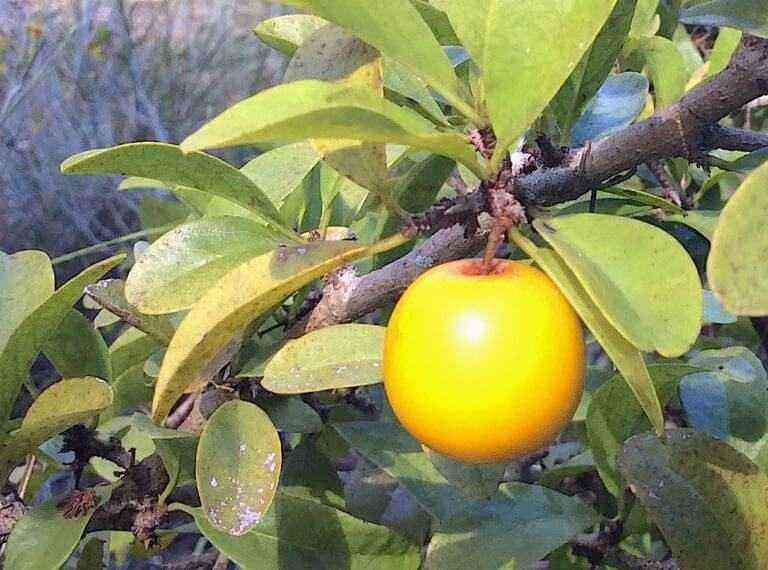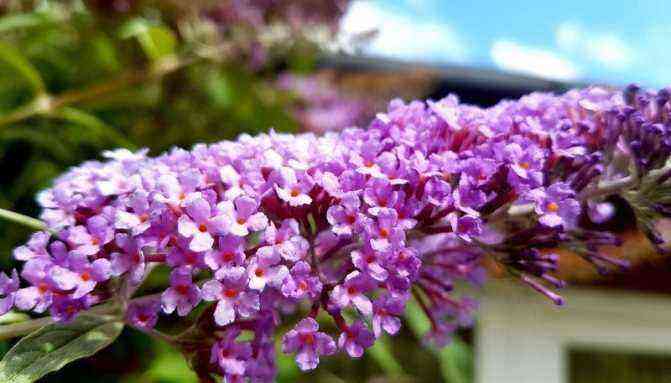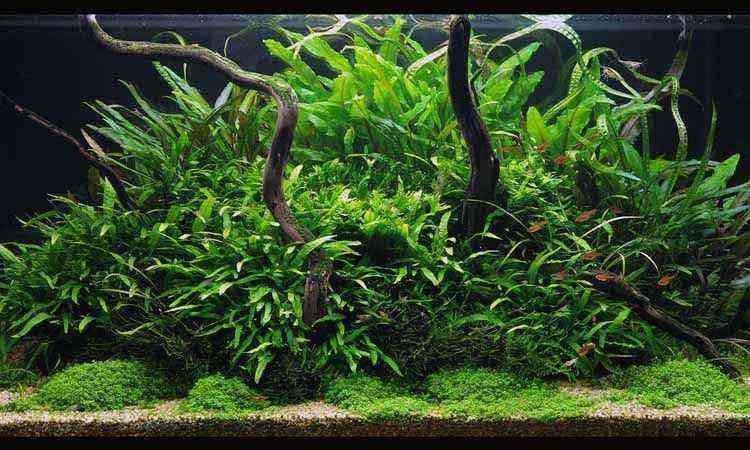Author rating
Author of the article
Yakov Pavlovich
Professor, Head of the Department of Vegetable Growing
Articles written
153
Sweet cherry is a thermophilic garden culture. The climatic conditions of the Moscow region are not suitable for growing southern trees. However, thanks to breeding work, there are cherry varieties for the Moscow region that withstand the conditions of the region and give a bountiful harvest. It is enough only to choose a species that is suitable for its characteristics, as well as to take proper care of plantings in the future.
Features of this region
The cultivation of cherries in the Moscow region is fraught with some difficulties that are associated with the climatic features of the territory. In winter, quite severe frosts are recorded in the region. In the absence of snow cover or a low layer thickness, trees are defenseless against bad weather. Even frost-hardy varieties suffer from this cold, and low-hardy cherry varieties are not suitable for this climate.
During the year in the Moscow region, there are often serious changes in air temperature day and night. Because of this, the thin cherry bark bursts and moves away from the wood. The lack of a protective covering causes rotting, which can lead to the death of the tree.
Return frosts are noted in the region in spring. At this time, the trees begin to bloom, and a sharp cold snap causes the flower buds to fall off. Therefore, cherry species that start growing early are not capable of bearing fruit in the Moscow region.
Reproduction by vaccinations
Sweet cherries can be successfully propagated by cuttings. The best stock for cherries in the Middle Lane is cherry. This is a related planting. Cherries will not take root on an apple tree or a pear.
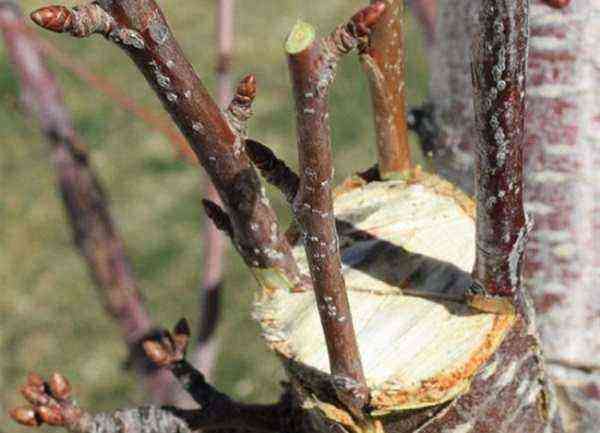
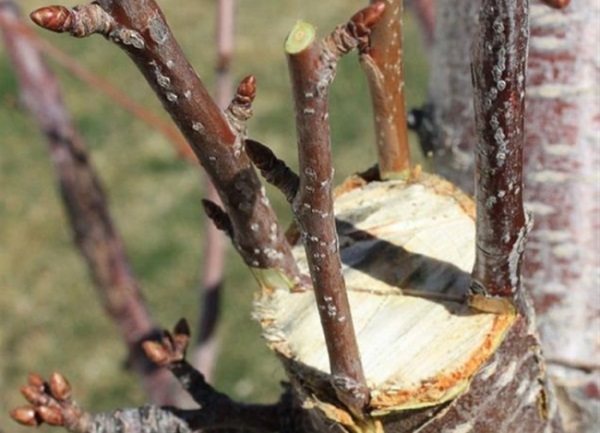
Pros of the procedure
Vaccination is in demand among gardeners. The advantages of the procedure include:
- the ability to grow several varieties on one plant;
- the ability to save space on the site;
- increased plant immunity;
- strengthening resistance to pests and diseases.
On a note!
When deciding what to plant cherries on, you need to give preference to related species. The best option is trees from the Plum family.
Thanks to grafting, cherries can be grown even in an area with a close occurrence of groundwater. It also increases the resistance of the tree to frost. Planting is easier to tolerate climate change in the Middle lane.
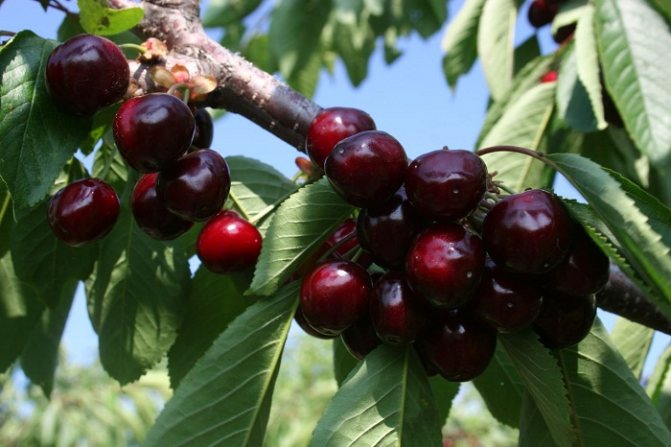

The most popular cherry varieties for the Moscow region
Cherry trees, which have been bearing fruit for a long time in the gardens of the Moscow region, are still popular. Due to its wide distribution in the region and positive reviews, it is worth noting:
- Fatezh. Winter-hardy variety of medium early ripening. High-yielding pinkish-yellow cherries are distinguished by their sweet pulp with a slight sourness. The height of the tree reaches 5 m, and the flowers require an additional pollinator.
- Iput. A medium-sized species with a wide crown belongs to the early maturing. The dark red berries have a firm flesh. The flowers and the plant as a whole are resistant to low temperatures. Sweet cherries are resistant to fungal infections.
- Ovstuzhenka. A short tree with beautiful dark fruits and early ripening. Like other best cherry varieties, it is frost-resistant. There is immunity to moniliosis and coccomycosis; it is also infrequently exposed to other diseases.
- Narodnaya Syubarova. An unpretentious cherry species with the ability to self-pollinate, it is resistant to frost, as well as to the main diseases of the culture. A tall tree begins to bear fruit at the 4th year of life, giving dark red berries with a dessert taste.
- Drogana is yellow. Like all yellow cherries, this type belongs to the early ones. Light fruits are large, with a bright dessert taste, but poor transport tolerance. Tall trees need additional pollinators, but crops are immune to diseases and resistant to cold weather.
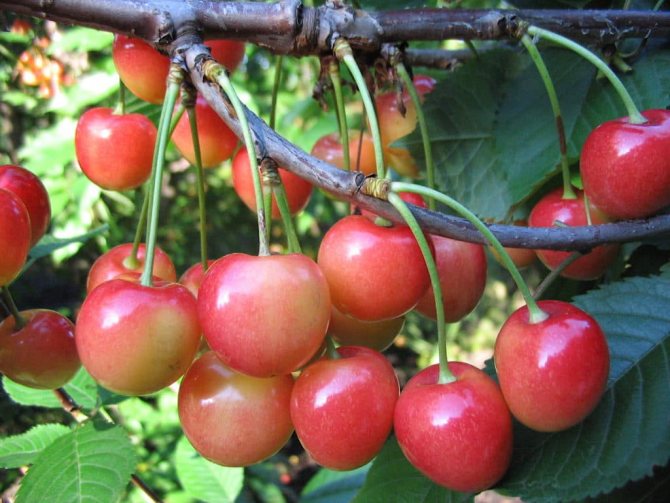
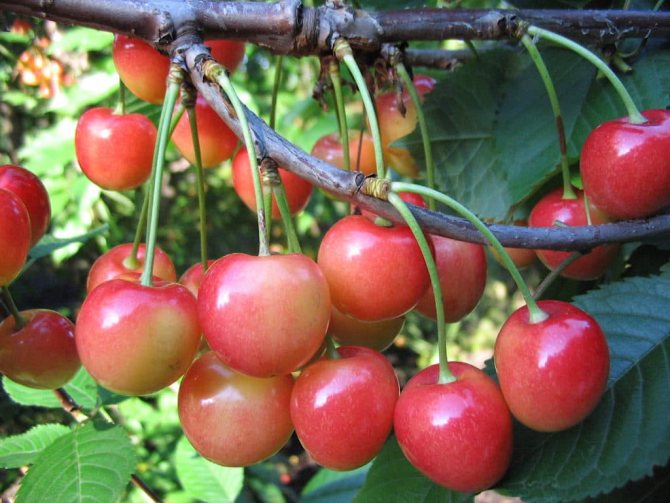
Fitting
How to plant cherries so that they give a good harvest?
Sweet cherry is famous for its incredibly excellent taste. Delicate, sweet fruits have a unique taste that will be remembered for a long time and you will want to taste it again. Homemade cherries, grown with love on their own plot, are especially tasty. To the delight of any gardener, the area of cultivation of the culture has greatly expanded recently, thanks to selection, we can grow this thermophilic crop not only in the south of the country, but also in more northern regions.
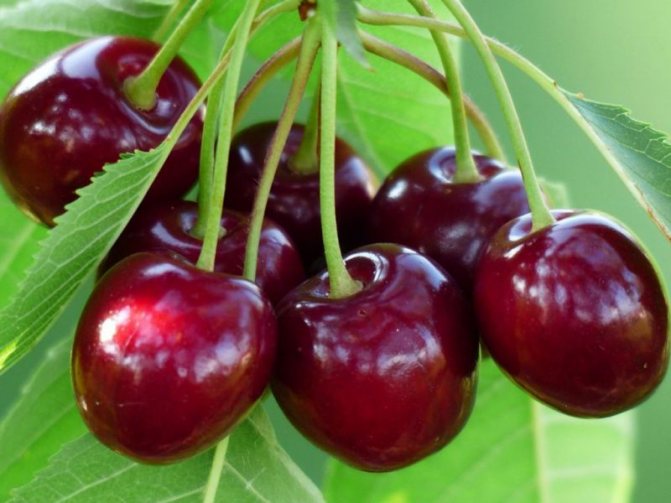
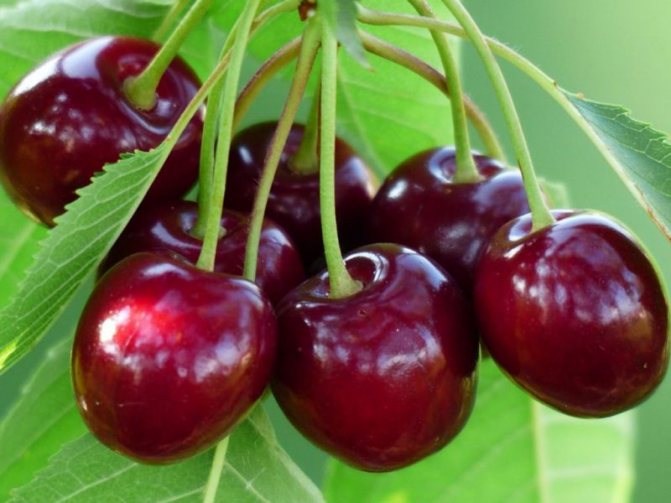
Early grades
Among the reliable early cherries suitable for the Moscow region are known:
- Raditsa. A medium-sized tree quickly begins to bear fruit. After 4-5 years, the plant produces oval fruits of a dark red hue. The sweet dense pulp retains its shape, tolerates long-term storage and transportation. The disadvantage of the variety is self-infertility.
- Ariadne. The plant belongs to the vigorous type, with a characteristic resistance to winter cold and dry summers. But there is no immunity to cultural diseases. Sweet red berries are tasty, large, dense.
- Gronkavaya. Due to its low height, the tree is quite compact. Among the advantages of the variety are high yields, immunity to infections and frosts. The color of the berries is red, the size is large, and the pulp is easily separated from the stone.
- Early Pink. This cherry species tolerates a lack of moisture and disease. A high yield is observed when additional pollinators are present. The berries are medium in size and have a creamy shade with a blush.
- Orlovskaya Amber. The sprawling tall tree bears its first fruits for 4 years. Heart-shaped yellow berries ripen in large quantities, despite self-fertility. Saplings are winter-hardy, resistant to moniliosis and coccomycosis.
See also How to plant and care for cherries outdoors

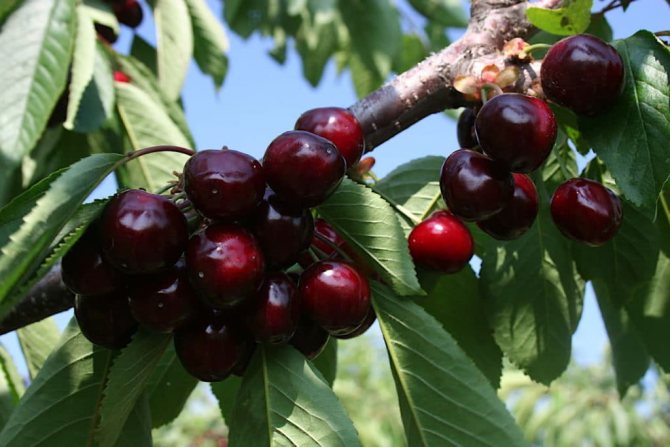
Radica
When is it better to plant: spring or autumn?

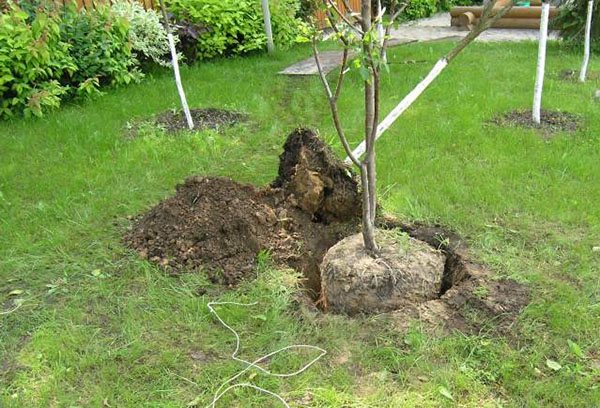
Cherries are planted in cold regions in the spring, when the buds swell.
Sweet cherry is a rather thermophilic garden culture. For this reason, experts advise planting a tree in the spring, but only if the cherry will grow in regions with a cold climate.
For the south of Russia and the Central region quite acceptable is autumn planting .
Having decided to plant a fruit tree in the fall, it is very important to observe the timing of this procedure. So, this must be done before the top layer of the soil has time to freeze.
The optimal time for planting cherries is from mid-September to the end of October.
This period of time is the most suitable, since trees in the dormant stage will direct all their vitality to adapt to a new place, and not to plant buds.
If the seedling was acquired too late and they did not manage to plant it in a permanent place until the end of October, then it is buried in the ground for wintering, and planted already with the arrival of spring.
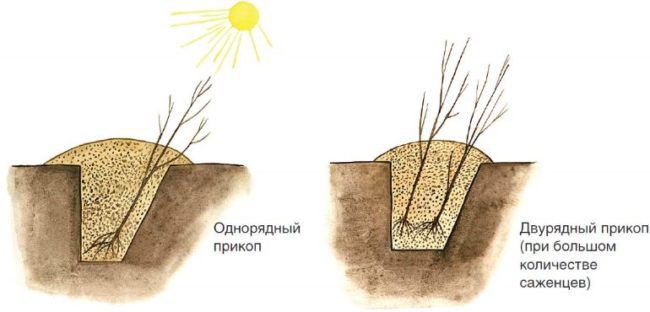
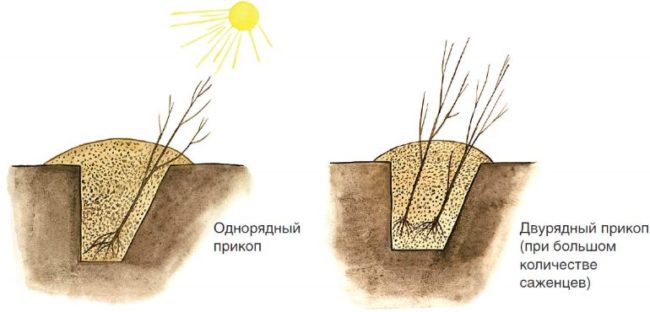
Saplings are buried in a hole 40-50 cm deep.
Landing in Siberia
Gardeners should remember that for Siberia and other regions of the Russian Federation with a harsh climate, only spring planting of cherries is suitable , which is held in late April – early May.
Otherwise, the garden culture will not survive the cold winter and, without having time to gain strength, it will freeze.
Advantages and disadvantages of autumn planting

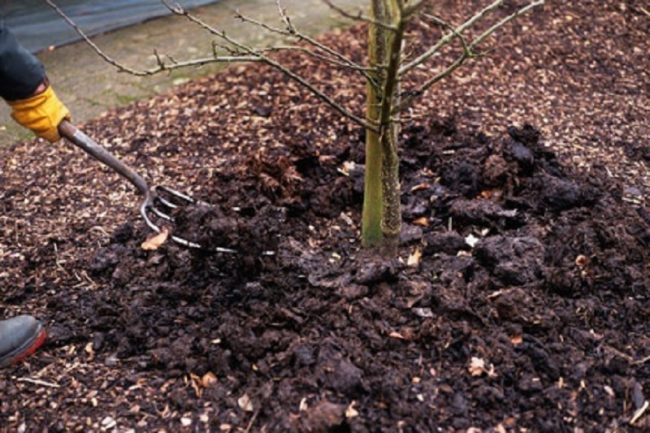
Autumn planting of sweet cherries can be done up to frost.
Mid-season cherry
The best varieties with an average ripening period of berries:
- Orlovskaya Pink. Pinkish berries with a blush appear in the second half of July. The small size of the fruit affects the average yield of the variety. The tree is immune to frost and winter cold.
- Rechitsa. The seedling begins to bear fruit at the age of 5 years. Juicy sweet cherries in biological ripeness acquire an almost black hue. Colds and fungal diseases are not terrible for the species.
- Odrinka. Sweet cherry blossoms late enough, does not suffer from spring sunburn. Medium-sized red berries have a dessert flavor. The species has no immunity to infections.
Late varieties
Late-ripening cherries are not always suitable for the Moscow region, but there are exceptions:
- Bryanskaya Pink. Medium-sized fruits with a beautiful pink hue ripen by the beginning of August. The berries are distinguished by their transportability, firmness and sugary taste. The seedling is resistant to rot and coccomycosis.
- Michurinka. The medium-sized variety is quite compact, but high-yielding. Red berries have a sweet and sour taste and medium size.
- Red Dense. Winter-hardy cherry grows quickly and bears fruit for 5 years. The color of the berries is yellow-orange with a reddish blush. The creamy crunchy pulp is characterized by a sweet taste.
- Leningrad black. Dark berries appear in late June or early July. A tree up to 4 m high has high winter hardiness and strong immunity, but requires a pollinator.
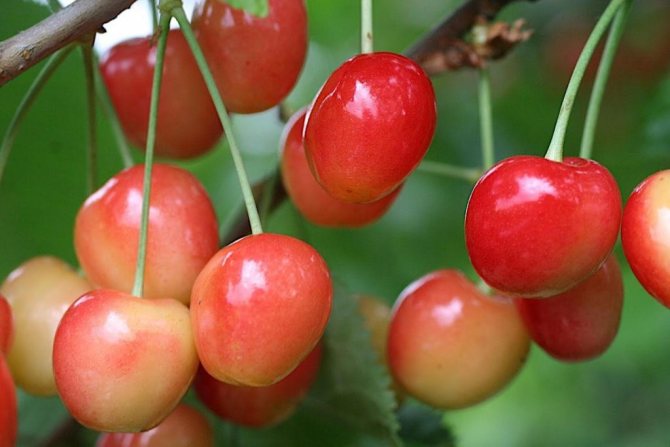
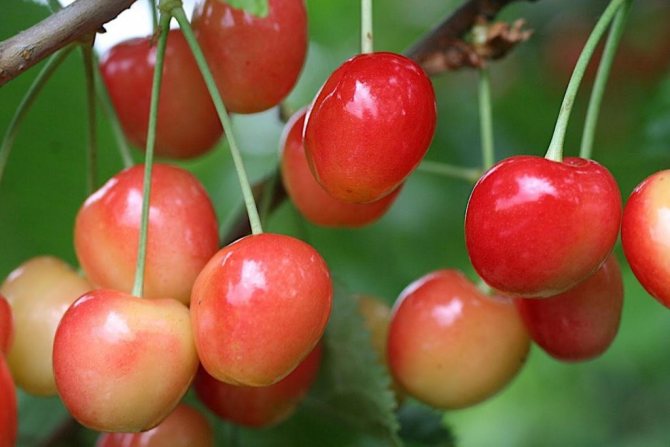
Bryanskaya Pink
Collection and storage of fruits
The fruits are plucked after acquiring the dark color characteristic of the variety. Unripe berries are not picked. They have an unpleasant, sour taste. Ripening berries is impossible at home. Overripe berries fall off. They are eaten by birds, they rot and attract insects. The fruits are picked in the morning after the dew dries. If it rained the day before, picking berries is postponed until they dry out. Otherwise, the fruits are poorly stored.
Ripe cherries are not stored for a long time. At room temperature, it stays fresh for no longer than seven days. In the cold, the storage time increases to three weeks if the fruits are completely dry. To preserve the berries for the winter, they are frozen. Before placing them in the freezer, they are thoroughly washed and dried. Then the berries are placed in a container and sent to freeze. Thawed cherries are used to prepare fillings for pies, sauces, compotes and other dishes.
Winter hardy
Particularly strong, frost-resistant cherry varieties:
- Valery Chkalov. Dessert cherries with large red fruits begin to bear fruit in early June. A high, stable yield is combined with a strong frost resistance.
- Red hill. A short tree with a wide crown is characterized by an average yield. The yellow berries with a pink blush ripen early enough. The variety is resistant to coccomycosis and winter frosts.
- Saplings of Fatezh, Raditsa, Ovstuzhenka, Chermashnaya, Bryanskaya Rozova, Tyutchevka, Revna are also resistant to frost.
The best varieties with descriptions and photos
Below we list the best cherry varieties for the Moscow region.
Lena
The late-ripening variety “Lena” has been under trial since 2006. A medium-sized tree has a standard round-oval crown. The cultivar needs pollinators. Recommended varieties – Iput, Revna, Ovstuzhenka. The tree begins to bear fruit in the 4th year.
Lena’s fruits are large, dark red, weighing from 6 to 8 g. Ripe cherries turn black and red. The variety practically does not suffer from coccomycosis, moniliosis, clasterosporiosis. Tasting score – 4,7 out of 5. On average, the yield of the variety is 80 c / ha. This variety is chosen because of its large tasty fruits, high yield and frost resistance.
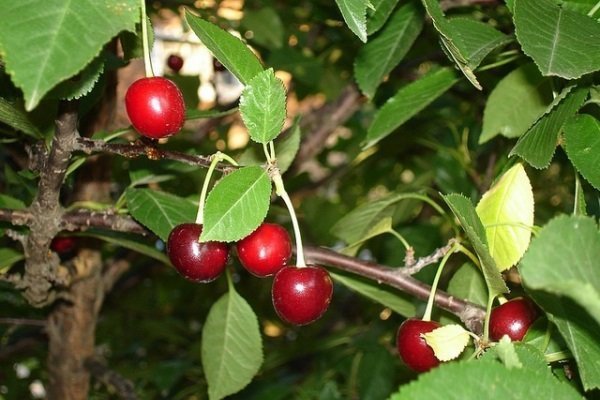
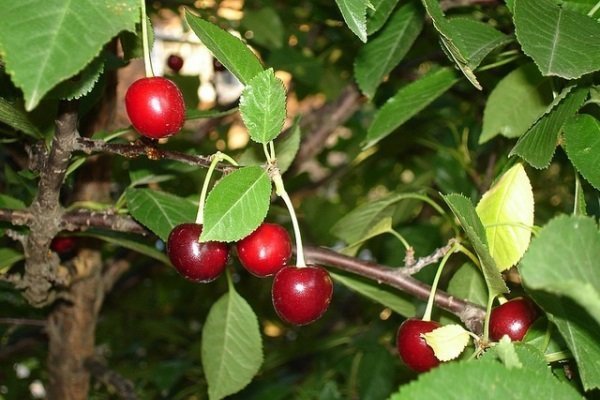
Michurinskaya (Michurinka)
Late-ripening cherries bred by breeders of the V. Michurin. On variety testing since 1994. In a medium-sized tree, characterized by rapid growth, the crown is raised, rounded-oval. The tree bears its first fruits in the 5-6th year.
The dark red drupes weigh about 6-7 g. The fruits have short stalks that can be easily separated from the branches. The variety is versatile and well transported. From 1 hectare harvested from 80 to 140 centners. The variety needs pollinators. Recommended pollinator – Pink Pearl. The variety is recommended for the Moscow region – it is frost-resistant, drought-resistant, does not suffer from coccomycosis. Minus of the variety – wood can be damaged by frost, and because of this, the tree is short-lived.
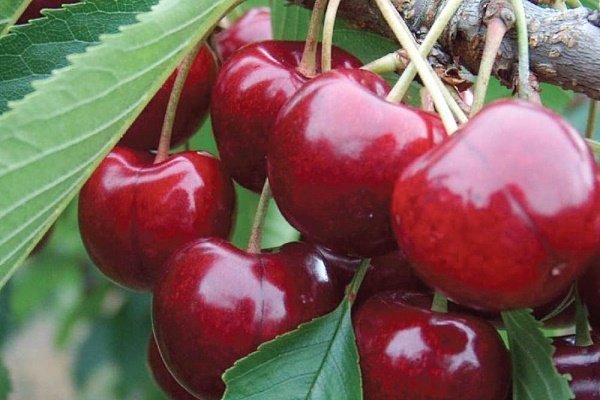
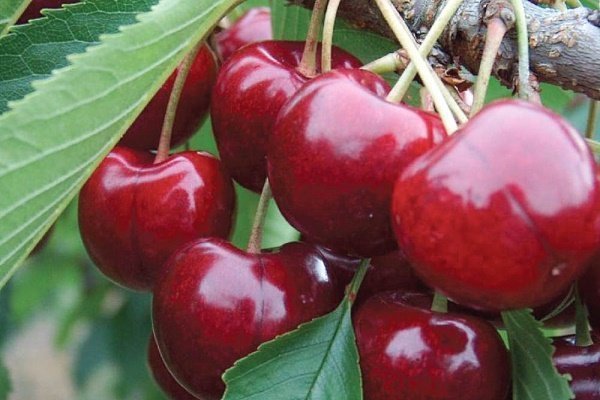
Veda
Late-ripening cherries of domestic selection. Recommended for the Central Region. The tree is not tall – about 2,5 m. At this height, it is convenient to look after and harvest the tree. The crown is round and wide. Recommended pollinators – Bryanochka, Tyutchevka, Bryanskaya pink.
The fruits are deep red, almost black. They weigh about 5-6 g. The pulp is dark red, the juice is claret. Productivity – 77-80 kg / ha. One tree grows from 25 to 65 kg of cherries. It is well transported and therefore good for commercial cultivation. “Veda” attracts gardeners of the Moscow region with its high frost resistance, sweetness and versatility of fruits. Experts gave the variety a tasting rating – 4,6 points. Drought resistance is medium, and winter hardiness is high. After the most severe winters, flower buds are preserved by 80%.
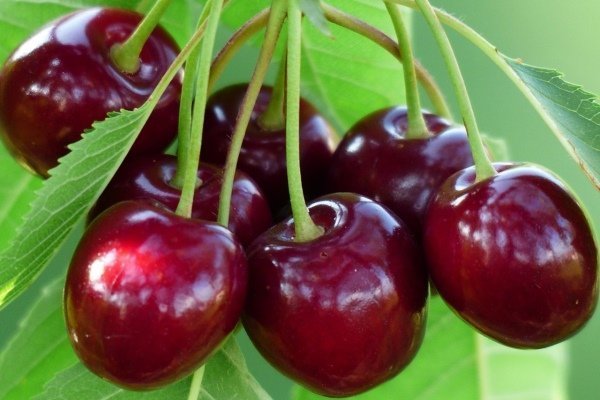
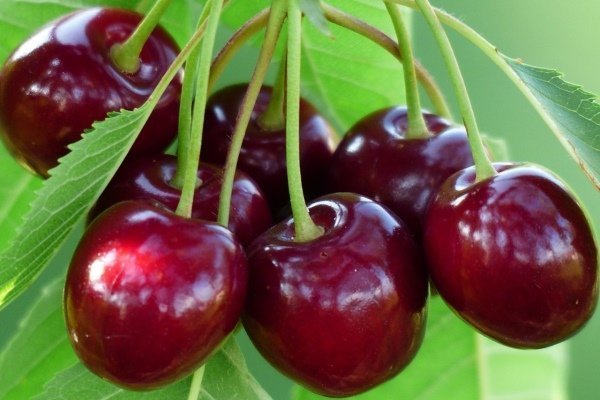
From a botanical point of view, a sweet cherry is a fruit, a drupe, from a culinary point of view, a berry.
Radica
An early variety of domestic selection, entered in the State Register in 2001. The tree grows quickly, has an average height of up to 4 m, and a medium dense crown. Needs pollination. Recommended varieties – Iput, Revna, Tyutchevka. The crop appears in 4-5 years. About 1 c / ha are harvested from 60 hectare.
Drupes are slightly elongated, dark red. Ripening fruits turn black. The pulp and juice are dark red. One drupe weighs on average 4,5 g. The maximum weight is 6 g. Fruit stalks are long and thin. Tasting score – 4,5 points. The stalks are easily detached from the branches – harvesting is easy. Withstands frosts down to minus 35 degrees. Does not suffer from coccomycosis and moniliosis. The fruits do not crack.
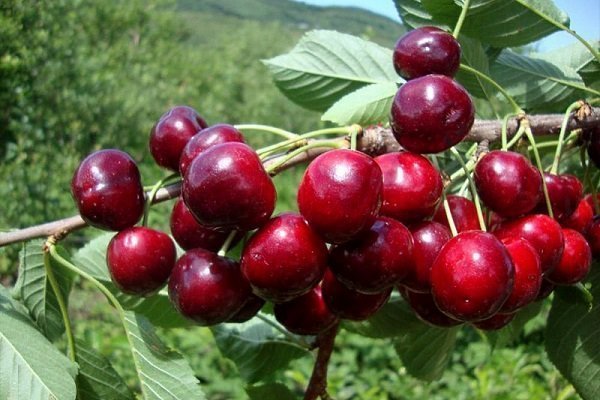

Iput
Early ripe sweet cherry. The height of the tree is 4 m. It has a wide-pyramidal crown. Although the variety is early, in the Moscow region it ripens only at the end of June. One tree grows 25-50 kg of fruits. The best pollinators are Revna, Tyutchevka.
The color of cherries changes as they ripen – from red to black. Weight – 5-5,5 g. Maximum weight – 9 g. Easily detached from the stalks. Very juicy and sweet pulp. Tasting score – 4,5. Cons – they crack during the rains, the bones are separated with difficulty, exactingness to the soil. Pros – resistance to fungus, frost resistance, versatility, transportability, keeping quality.
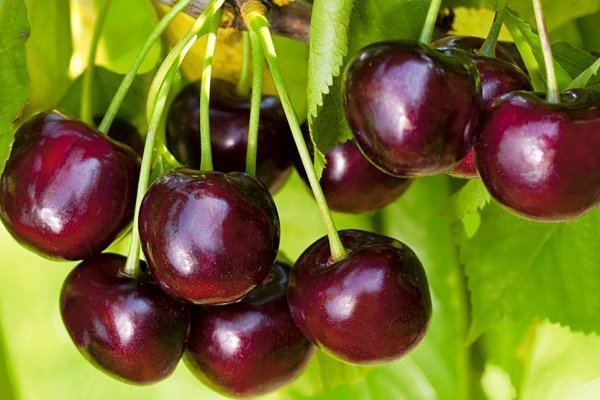
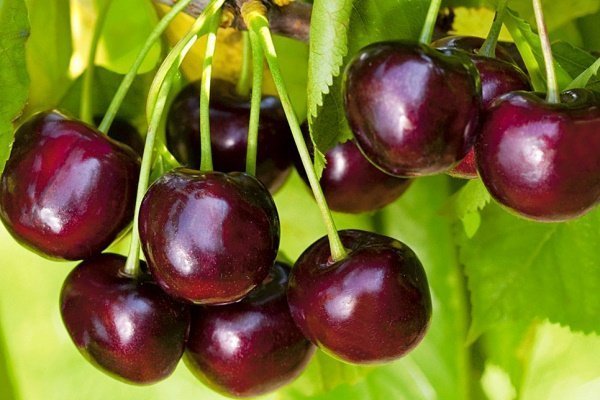
Rechitsa
The variety is mid-season. The tree quickly grows up to 3-4 m. The crown is pyramidal. Ripens in the second half of July. From 1 hectare harvested 80 centners, maximum – 140 centners. One tree produces about 30 kg of fruit. The recommended pollinator is Iput. The tree bears fruit in the 5th year.
Drupes are round, deep red, to black. They weigh 5-6 g. Juice and red pulp. The berries are sweet on the palate, the estimated score is 4,5. During transportation, juice does not flow from the fruit – cherries can be transported without loss. The fruits are universal – they are tasty fresh and good in preparation. Drought resistance is average, and frost resistance is high. The variety is resistant to recurrent frost.
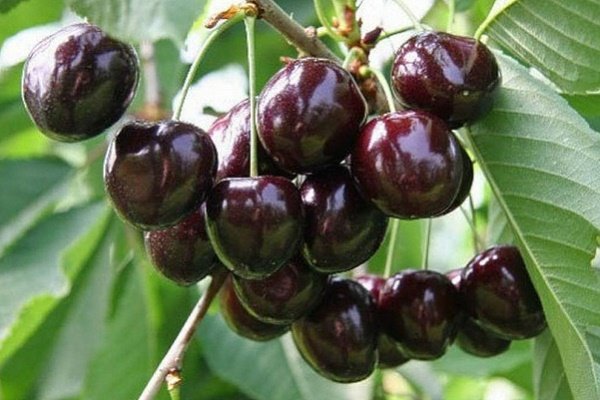

Bryansk pink
This variety was recently bred, but has already become popular among gardeners. Subject to agricultural technology, Bryansk pink bears excellent fruit in the Moscow region. In the Central Region it was zoned in 1993. Late variety. The tree has a wide-pyramidal crown. Pollinators – Iput, Revna, Ovstuzhenka. On one tree – 20-30 kg of cherries.
Drupes are rounded, pink in color. There is a speckled pattern on the skin. Weight – 4-5,5 cm. The pulp is yellow in color, with characteristic cartilage. The juice is clear and colorless. The taste was rated by the tasters at 4,1 points. The variety is appreciated for its berries – very beautiful and tasty, winter hardiness, resistance to fungal diseases. The fruits do not crack. The tree grows slowly, fruiting in the 5th year. The fruits are easily torn off with stalks.
Stores well in the refrigerator – up to 2 weeks. The purpose is universal. The tree tolerates spring frosts, the stem is resistant to sunburn. High immunity to moniliosis and coccomycosis.
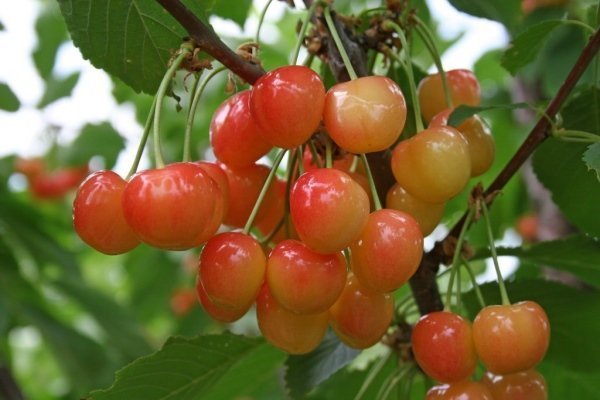

Ovstuzhenka
A variety with an early middle ripening period. In the State Register of the Central Region since 2001. Trees grow to a small height. The growth rate is high. Medium-dense crown of spherical shape, slightly raised. The first fruits appear in 4-5 years. Up to 16 kg of cherries are removed from the tree. Very low self-pollination – only 5%. Pollinators – Iput, Raditsa, Revna, Bryansk pink, Tyutchevka.
Fruits are large – from 4 to 6 g. Oval-round fruits of dark red color, ripening, turn black. Does not crack even at high humidity. The berries are extremely sweet. The estimated score is 4,7. The variety is very resistant to fungal diseases. Gardeners in Ovstuzhenka are attracted by the aesthetics and taste of the fruit, the compactness and short stature of trees, productivity and immunity to diseases.
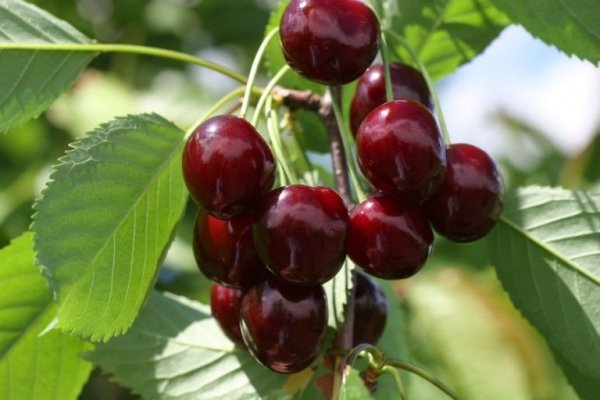
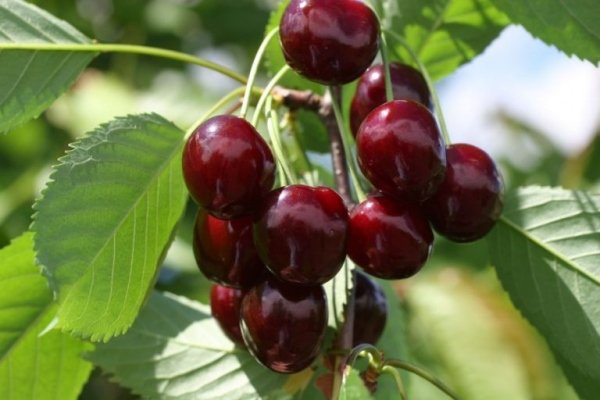
Odrinka
From mid-late varieties. The variety is relatively new – it was entered in the register for the Central Region in 2004. The trees are medium-sized, with a medium-dense crown. Begins to bear fruit in the 5th year. Pollinators – Rechitsa, Ovstuzhenka, Revna. From 1 hectare harvested from 80 centners. The maximum yield is 220 centners.
Fruits weigh from 5,5 to 7,5 g. Rounded drupes of dark red color have dense red flesh. Taste rating – 4,7 points. The stem firmly endures extreme conditions – sun and frost. Frost resistance – up to minus 34 ° С.
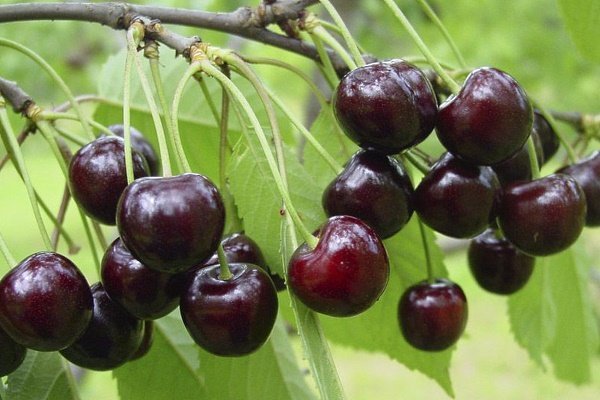
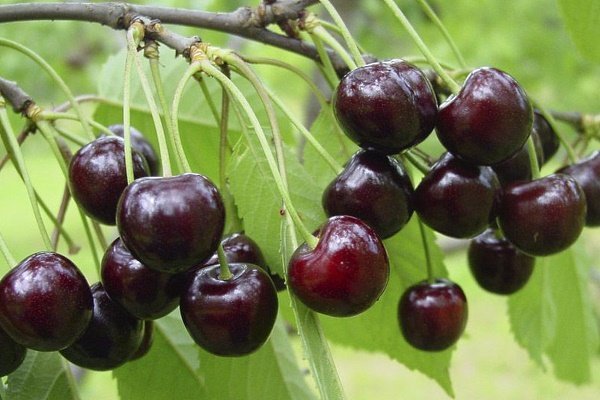
Narodnaya Syubarova
Unlike most varieties of sweet cherries, Narodnaya Syubarova is a self-fertile variety. Self-pollination is about 90%. Bred by Belarusian breeders. The tree is powerful, tall – 5-6 m, with a very wide crown. Up to 1 kg of cherries grow on 55 tree. The first harvest is 4 years after planting the tree.
The berries are dark scarlet in color, with a glossy skin. One fruit weighs about 6 g. The variety can withstand frosts and strong winds. The branches are powerful – they can withstand heavy snow load. The variety is generally unpretentious to soil. Differs in amicable ripening. Congenital immunity to coccomycosis, other fungal diseases.
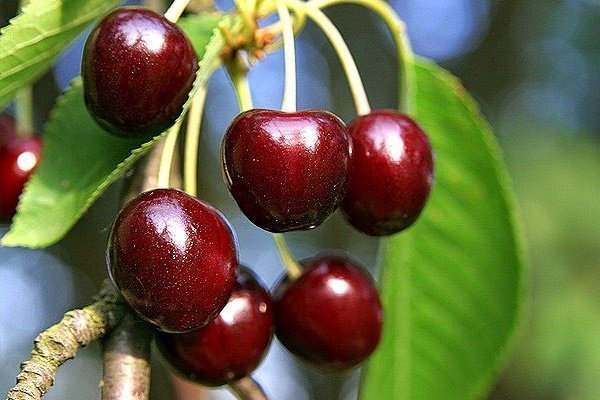

Chermashnaya
A relatively new, yellow-fruited variety. In the State Register – since 2004. Zoned in the Central Region. The trees are powerful, medium-sized, up to 5 m high. The crown is round-oval, slightly raised. The first harvest is for 4-5 years. On young trees 7 years old, up to 12 kg of cherries ripen. On mature trees – 30 kg. Productivity – 85 kg / ha. Needs pollinators.
Fruits are yellow, with a pink blush, weighing 4,4 g. Fruits are medium-sized, but there are many of them. The fruit has a firm pulp, juicy and tender. The berries taste sweet and sour. The variety belongs to dessert. The estimated score is 4,4. Winter hardiness of the kidneys is average. General winter hardiness is good. High immunity to fungal diseases. Minus – short storage.
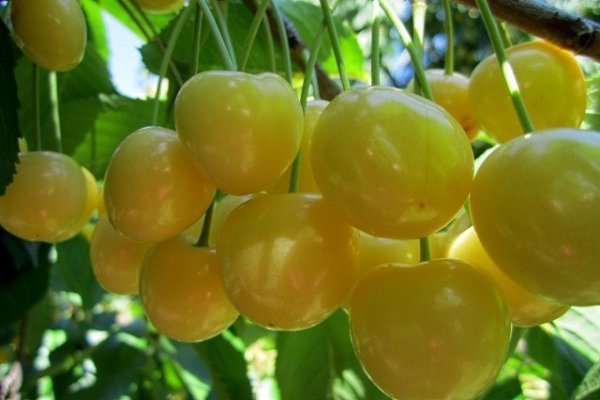
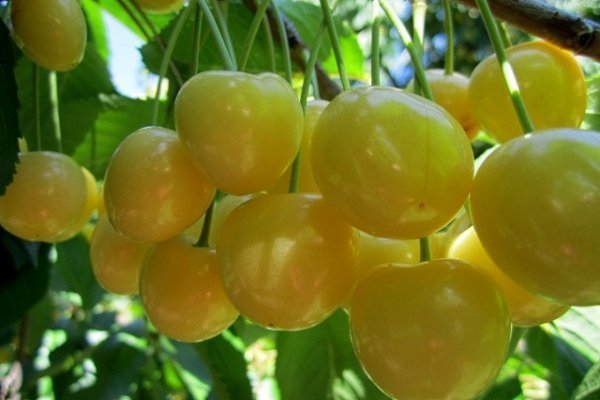
Teremoshka
A variety with medium ripening periods. Weak trees have a wide-round crown. Desirable pollinators – Bryanskaya rosea, Ovstuzhenka. From 1 hectare harvested from 50 to 100 centners.
Fruits are dark red, weight – 5-6,5 g. Fruits are sweet, evaluated on a tasting scale at 4,7 points. Sweet cherries hardly crack in wet weather. Frost resistance – up to minus 34 ° С. High resistance to fungi. Fruits are dense, well transported.
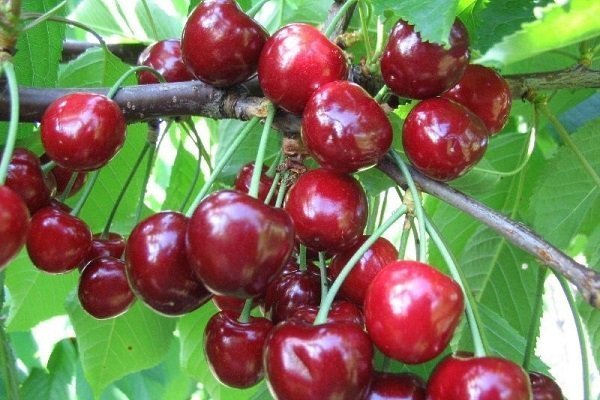

Leningrad black
Mid-season variety. One of the first winter-hardy varieties of sweet cherry – it is grown even in the Non-Black Earth Region and in the north of the Central Black Earth Zone. Medium-sized tree with a spreading crown. 30-40 kg of cherries are harvested from the tree. The height of the tree is 3-4 m. Begins to bear fruit in the 3rd year. Collection – the second decade of July. The variety is self-fertile, pollinators are recommended – Iput, Revna, Veda.
The fruits are sweet, black and red. Mass – 3-3,5 g. The taste is traditional, cherry, sweet to sugary, with a slight sourness. Ripening, they do not fall off for a long time. The fruits are medium to large. The pulp is dense, fibrous. Tasting score – 4,2 points.


Backyard yellow
Early table variety. Self-fertile. The tree grows quickly, but begins to bear fruit only in the 6th year. The variety has been zoned in the Central region since 1998.
Fruits are yellow, large, round, weight – 5,5 g. The pulp is cartilaginous, juicy, with colorless juice. The taste is sweet and sour. Score – 4,7 points. The berries are beautiful, they do not crack in the rain. The buds are resistant to spring frost.

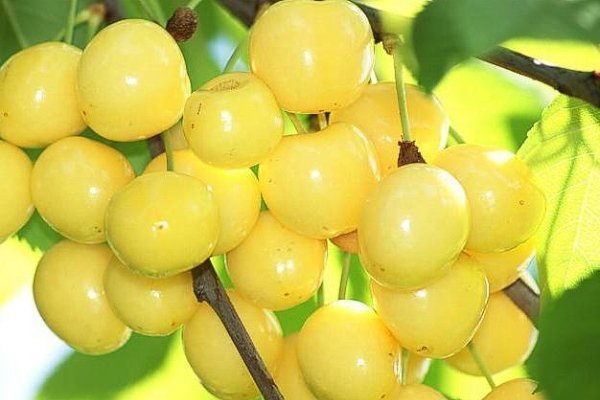
Fitting
This mid-season variety got into the State Register in 2001. The variety is zoned in the Central region. Trees of medium height – 3-5 m. Crowns – spherical. Harvest – for 4-5 years. 50 kg of cherries are harvested from a tree, 1 kg from 300 hectare. Pollinators – Revna, Raditsa, Ovstuzhenka, Chermashnaya.
Drupes are medium-large, round. Color – red-yellow. With light pink flesh, juicy, dense, cartilaginous. Weight – 6 g. Taste rating – 4,7 points. The fruit comes off dry from the stalk. Winter hardiness is above average. The buds, in comparison with the branches and the trunk, are less frost-resistant. Resistance to fungal diseases. Minus – a tendency to gum flow.
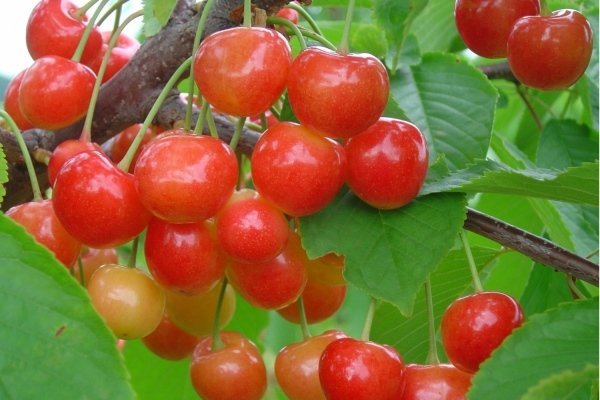

Valery Chkalov
This early sweet cherry has long been known to gardeners. The variety was bred in the 50s of the last century. The tree is tall – up to 6 m, and a thick trunk. He has a wide-pyramidal medium-dense crown. Early maturity is average – fruiting begins by the 5th year. Optimal pollinators – April, June early, Skorospelka. The tree grows about 60 kg of sweet cherries. There are over-yielding trees from which up to 170 kg of berries are harvested.
The fruits are large, weighing 6-8 g. The color is dark red. When ripening, the cherry becomes almost black. The peduncle is firmly attached to the drupe. When the stalk is torn off, the fruit lets out juice. The semi-gristly pulp has a dark red color, the veins are pink. The berries have a very good dessert taste. This variety is ideal for canning – delicious compotes are obtained. Frost resistance at an average level – up to minus 23 degrees. In case of frost, flower buds freeze – up to 60-70% die. The variety is affected by coccomycosis and gray rot. The variety is relatively resistant to other fungal diseases. This variety attracts with tasty large fruits, early ripening and abundant harvests.
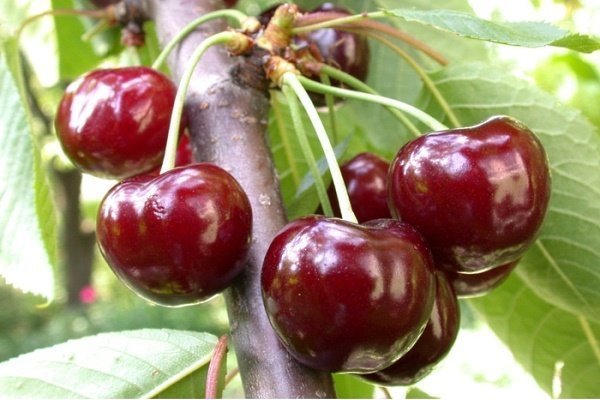
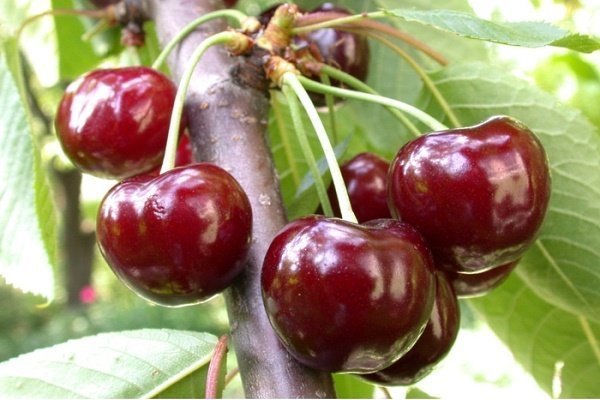
Tyutchevka
This late variety has very weak self-pollination ability – no more than 6%. Desirable pollinators – Ovstuzhenka, Iput, Revna. Differs in high productivity – Trees are medium-sized, fast-growing, with spherical spreading crowns. By the 5th year of planting – the first berries.
The dark red fruits have dense cartilaginous flesh. Average weight – 5,3 g. The tree can withstand frosts down to minus 25 ° С – without shelter, with shelter – up to minus 35 ° С. Very good taste characteristics. The assessment of the tasters is almost maximum – 4,9 points. Pros – well stored and transported. Minus – afraid of moisture, when waterlogged, cherries crack. Drupes are torn off from the stalks dry. Possesses exceptional resistance to moniliosis, to other diseases – medium resistance.
Red hill
This early table variety was bred in 2001. The variety is fast-growing – the first fruits appear in the 4th year of planting. One tree gives up to 45 kg of cherries. The trees at the “Krasnaya Gorka” are low, with a wide rounded crown. Berry picking time is mid-July. This is a self-infertile variety, it needs pollinators – Ovstuzhenka, Raditsa or Bryanskaya pink. The peak yield is from 6 to 12 years. But by the age of 16, it becomes old, the yield drops sharply, the tree is culled by age.
Fruits are round, collected in bunches, hanging densely on the branches. The taste is sweet, slightly sour. The color is golden, with a scarlet blush. The weight of one fruit is 4-6 g. Transportability is satisfactory. Sweet cherries are soft and juicy – refrigerators and special containers are needed during transportation. The variety is quite winter-hardy.
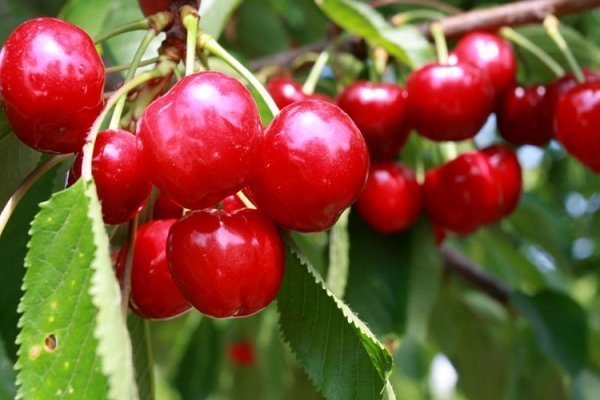
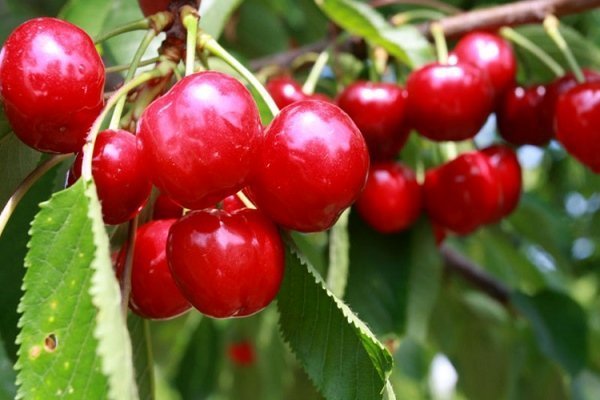
Bunch
An early, fast growing variety. Maturation – end of June. The variety was bred in 1999. The first cherries appear in the 4th year. Self-infertile variety. Cherry, Krasavitsa, Iput, Zhurba are used as pollinators. Productivity – 200 centners per hectare. About 1 kg are collected from the tree. The height of the tree is 30-4 m.
Fruits are heart-shaped, dark red, weighing on average 4,6 g. The stalk is torn off without sap. The bones are small, easily detached from the pulp. Assessment of tasters – 4,8 points. Resistant to coccomycosis and moniliosis. Sweet cherry is suitable for long-term transportation. High drought tolerance. High frost resistance – up to minus 27 ° С.
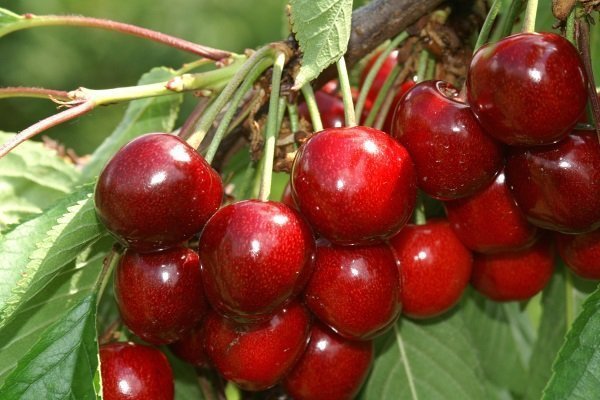
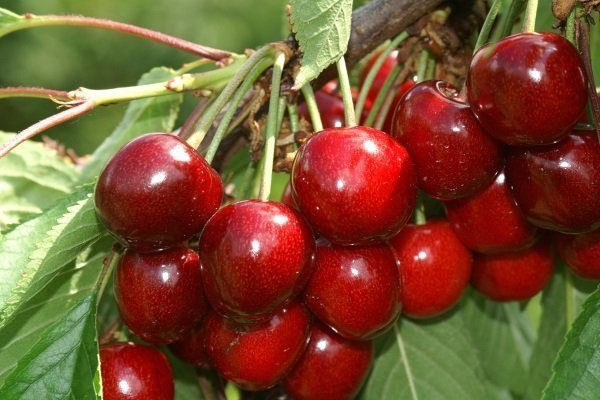
Revna
Medium late cherry – ripening occurs at the end of June. Begins to bear fruit only in the 5th year. The trees are medium-sized, fast-growing, with pyramidal crowns. The tree grows 14-30 kg of sweet cherries. From 1 hectare harvested from 75 to 115 centners. Pollinated with varieties of cherry Raditsa, Ovstuzhenka, Venyaminova.
Dark red, up to blackness, the fruits weigh 5-8 g. This beautiful, juicy and sweet cherry is rated by tasters at 4,9 points. The peduncle is torn off dry, without the release of juice. The variety is resistant to frost, fungal diseases and fruit cracking.
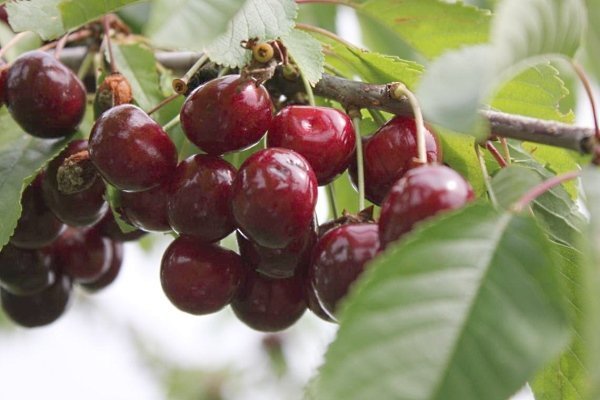
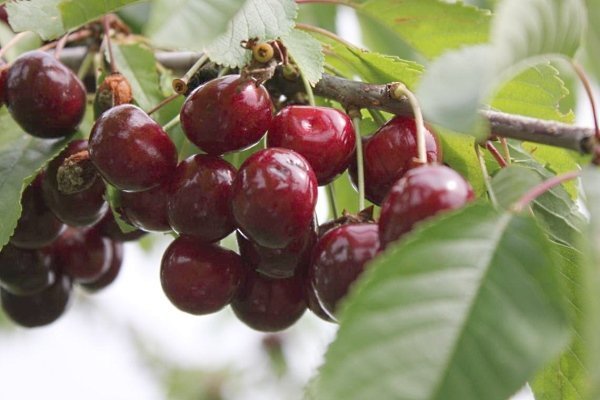
Oryol pink
Dessert variety with medium ripening dates – mid-July. The height of the tree is 3,5 m. The crown is pyramidal, flat and raised. Early ripening – bears fruit in the 3rd year. From 1 hectare harvested from 70 to 110 centners.
The weight of round, pink cherries is about 4 g. The pulp is pink, medium-dense, juicy, sweet-sour. Assessment of tasters – 4,4 points. Relative resistance to fungal diseases. The level of winter hardiness is medium.
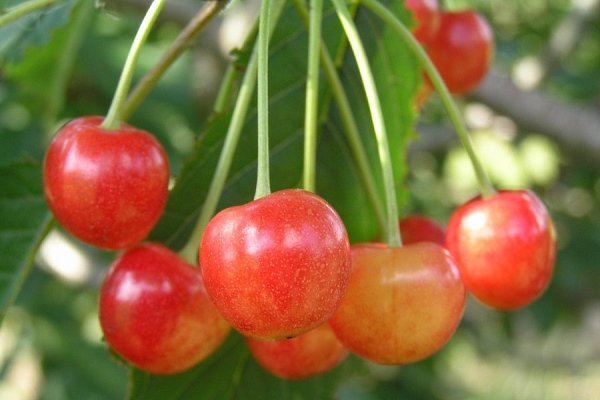
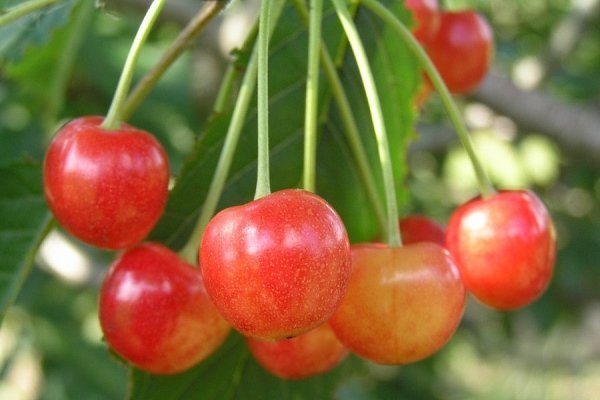
Gift to Stepanov
A completely new, mid-late variety – it was entered into the State Register only in 2015. The fruits ripen by mid-July. The tree grows up to 3,5 m. The crown is pyramidal. The crop appears in the 4th year. On 1 hectare it grows up to 80 centners. On a tree – up to 60 kg.
The dark red fruits weigh about 4 g. There are no subcutaneous points. The berries are sweet on the palate, tasters’ rating – 4,9. Thin stalks are easily detached from the shoots. The fruits are prone to shedding, therefore they are harvested immediately after ripening. Sweet cherries are suitable for canning and desserts, delicious fresh. Drought resistant. Transportability is limited – the fruits have a thin skin and easily let juice.

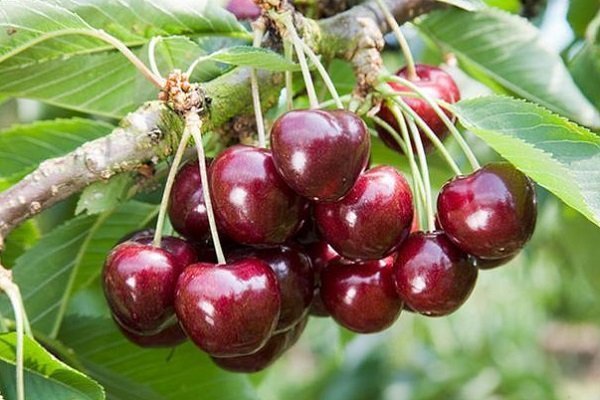
Columnar
In small summer cottages, it is convenient to plant small trees. Cherries with a compact crown:
- Silvia. Seedlings of an industrial mid-ripening variety give large berries of a ruby hue. The columnar tree reaches a height of 3 m, a diameter of 1 m. Fruits are stored for a long time and endure transportation, and the plant – cold and drought.
- Helena. The compact variety grows no higher than 3,5 m, but slowly gains strength for the first 3 years. Large red fruits with a tougher texture also retain their presentation. The tree has an early ripening period, unpretentious in care.
Silvia
Landing
Cherries must be planted correctly. Most flaws become apparent when the culture begins to bear fruit, and it is already difficult to fix something.
Landing scheme
Before planting, you need to think over the formation method. If the growth of cherries is restrained by pruning, the distance to other trees is made 3-4 m. With unlimited crown development, some varieties reach a height of 10 m. The planting scheme should be freer – 5 m to other plants.
Until the cherry reaches a large size, annual crops can be grown nearby. As the tree grows, they are changed to shade-tolerant ones, then they are completely removed.
Cherry grows rapidly, adding about a meter annually. There is no need to plant valuable perennial crops nearby, when the berries appear, they will still be trampled. In what year the sweet cherry bears fruit after planting, depends on the variety. This usually happens in the 5-7th season. Most varieties enter full-fledged fruiting by the age of 10.
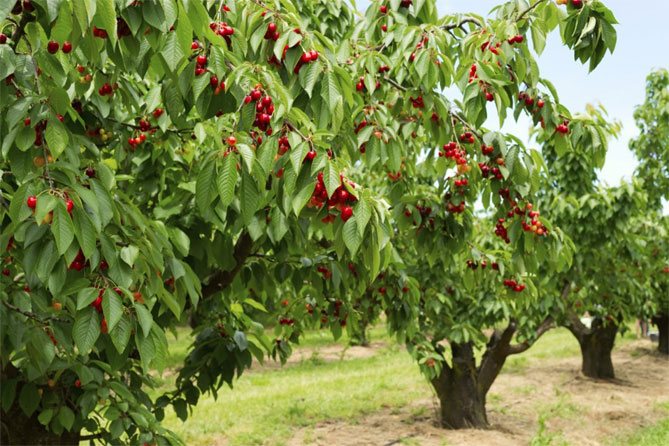
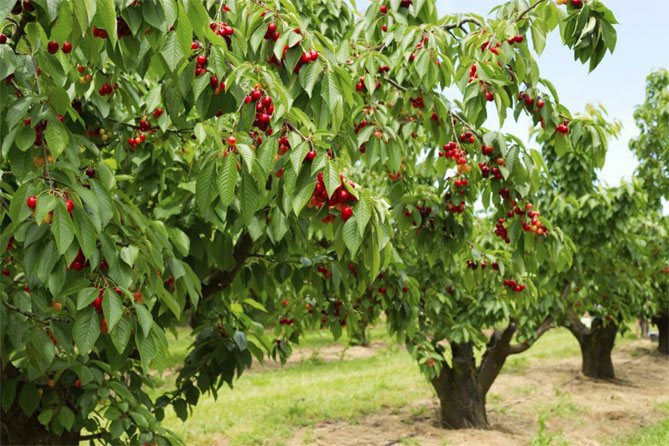
How to prepare a hole for planting
The hole needs to be dug in advance, ideally in the previous season. But no later than a month before planting. Cherry is very sensitive to the deepening of the root collar, and it is difficult to avoid this if the earth does not sink in advance. Some gardeners plant the tree too high, but this also has consequences.
The standard pit size is about 80 cm in diameter at the same depth. For laying the drainage layer, 20 cm is taken away. Drainage is formed from broken bricks, large rubble, stones covered with sand. The planting mixture is prepared from the top fertile layer of the earth and 2 buckets of humus.
It is necessary to take into account the type of soil:
- if the soil is too dense, add sand;
- if sour, lime.
The hole is filled 2/3 or 3/4, watered. Allow the substrate to sink.
Important! Starting fertilizers are added to the pit only during spring planting. When you intend to start excavation in the fall, you should refrain from fertilizing. Even if there is no or little nitrogen in the top dressing, there is a danger of re-growth of shoots, the wood will not have time to ripen, the tree will die or freeze badly.
Self-pollinated cherry
For summer cottages, self-fertile cherry varieties are the most relevant option. Trees that are pollinated themselves do not require an additional pollinator. Suitable for the Moscow region:
- Pridonskaya. Hybrid cherry with partial self-pollination bears fruit at 6 years of growth. The high regular yield allows the variety to be used in the production of berries. Fruits are pinkish-red, with a sweet and sour taste.
- Tyutchevka. A medium-sized seedling quickly begins to bear fruit. Despite the average productivity, the variety is popular for its strong immunity and frost resistance. The dense maroon berries have a high tasting rating.
- Jealous. Almost black cherry with a bright sweet taste will ripen from the end of June. Medium-sized trees bloom early enough, because of which they can suffer from recurrent frosts, but in general they are characterized by winter hardiness and resistance to fungi.
- Also, pollinators are not required for the varieties Priusadebnaya Zheltaya, Valery Chkalov, Chermashnaya, Narodnaya Syubarovoy.
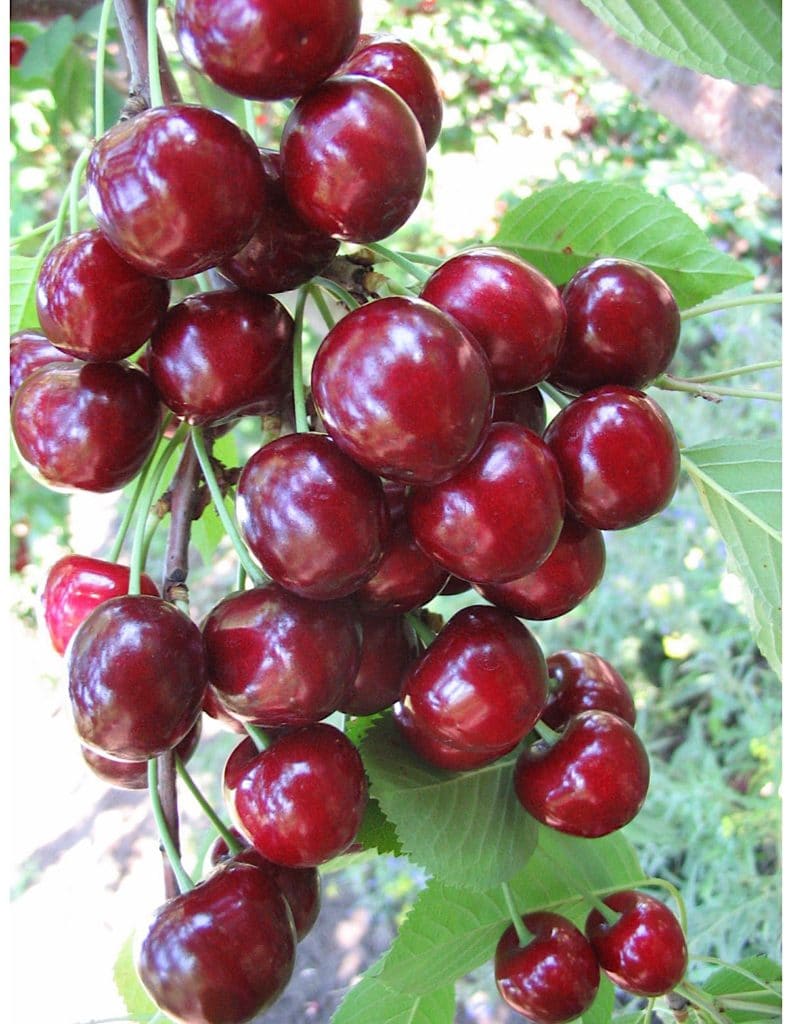
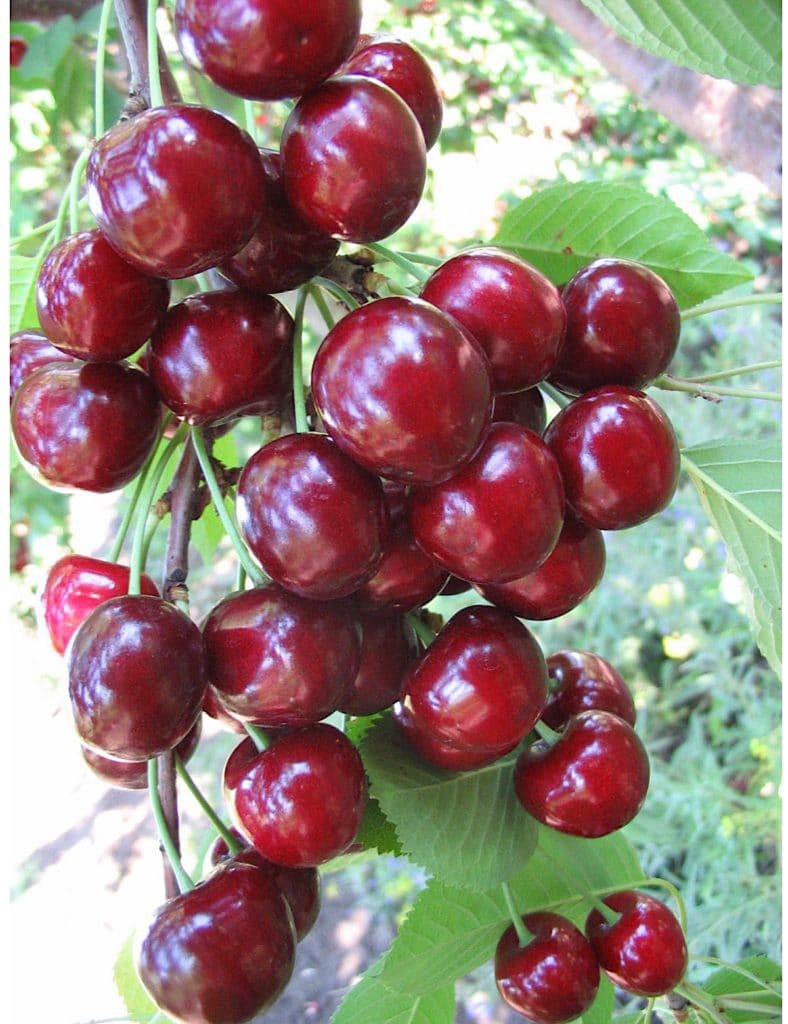
Tyutchevka
Diseases and pests
Despite the resistance of most varieties of sweet cherries to fungal diseases, they occupy a leading position in the list of possible problems that may appear when growing this crop.
Clasterosporium disease can be recognized by the black spots on the leaves of the plant. In the future, the foliage of the infected cherry tree falls off, and the fruits dry out.
Cocomycosis and gray rot are no less dangerous. They are caused by rainy, cold weather. Both diseases develop rapidly, and soon affect the entire tree. The leaves dry out and crumble, the yield of such plants decreases, the fruits rot.
As a prophylaxis for these and other diseases, immediately after flowering, the tree must be sprayed with a copper-containing preparation. In case of infection, the affected parts of the trees are removed and burned.
The most dangerous pests are:
- black cherry aphid,
- cherry fly,
- leaflet
- cherry pipe-runner.
They feed on plant sap, taking away their vitality and significantly reducing yields. As a fight against parasites, it is better to use insecticides such as Aktara, Karbofos, etc. In some cases, folk remedies can also help. For example, an aqueous solution of tobacco dust with the addition of a small amount of liquid soap.
Undersized varieties
Dwarf cherries popular in the Moscow region:
- Veda. Plant height does not exceed 2,5 m. Winter hardiness of this species is comparable to cherry. Flowering and fruiting occurs late. Dark ruby berries have a sweet and sour taste.
- Teremoshka. Variety up to 2 m high, with an average index of winter hardiness and productivity, but a sufficient level of resistance to crop diseases. Large fruits of dark red color have a sweet taste.
- Also, low trees grow from seedlings of Iput, Gronkava, Krasnaya Gorka, Tyutchevka, Raditsa and Bryanskaya Rose.
See also the Description and subtleties of growing large-fruited cherries
Growing and caring all year round
Trees planted in spring as well as mature cherries need crown formation. This is done before the bud swelling begins: several skeletal branches are selected, and the rest are cut into a ring, leaving no knots. Slices are coated with garden pitch. If the period of sap flow has begun, and there has not yet been pruning, then it is postponed for a year.
Interesting!
Most of the garden vara from the store is made on latacril or petrolatum, which will make a tree, especially a young one, sore. Therefore, it is better to prepare the product yourself from beeswax, turpentine, rosin and ghee. Such a remedy will definitely not harm trees.
After the air warms up to +18 C, cherries are treated with urea against diseases and pests that hibernated under the bark or at the roots. In the spring, young cherries are grafted onto an old rootstock plant. Feeding with phosphorus and potassium is necessary for a plant only from the fourth year. Nitrogen is added annually, and this is done twice a season:
- after establishing heat;
- in the third decade of May.
In spring and summer, it is necessary to remove weeds and loosen the wetted soil around the trunk to a depth of 8-10 cm. Over the summer, the tree needs to be given 3 to 5 waterings – their number depends on how often it rains. Cherry resists insects and fungus well, but at the first sign of infection, you need to quickly process the plants.
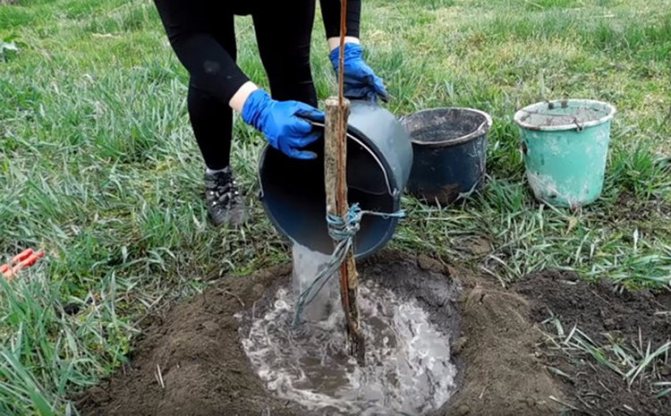
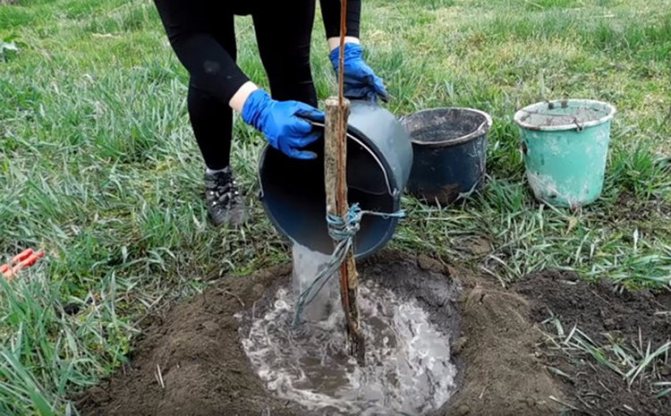
Table: Diseases and pests of varietal cherries
| Name | Evidence | How to fight |
| Klyasterosporiosis | Brown spots on the leaf blades, in place of which perforations are formed. Gum removal on stems. Shrinking stems | 1% solution of copper sulfate. Covering damaged areas with garden varnish. Nitrafen until the kidneys open. Bordeaux liquid 1% after flowering and 2 weeks after harvest |
| Monilioz (gray rot) | Rotting berries, drying buds and branches | Bordeaux liquid 1% after flowering and 2 weeks after harvest. 1% solution of copper sulfate. Covering damaged areas with garden varnish |
| Kokkomikoz | Small specks of brownish-red color, formation of secondary shoots | Bordeaux liquid 1% (before the kidneys open). Chorus solution 0,2% during bud formation and after flowering |
| Black cherry aphid | Folding, drying and blackening of the leaf itself, a layer of honeydew with a sooty fungus | Confidor before bud break. Tobacco dust solution (0,2 kg per bucket of water) |
| Cherry fly | Rotting and shedding berries | Special traps. With a strong infection, Confidor or Actellik |
| Leaflet | Foliage twisted fixed along the central vein, skeletonized leaves, multiple passages in wood | Chlorophos after harvest, in spring – before bud open |
| Cherry pipe runner | Damages the pulp of berries, breaking through to the bones | Aktar solution after flowering. After a month, spraying with any of the drugs: Karbofos, Aktellik, Corsair, Metaphos |
| Pyadenitsa-peeled | Bend in a loop, skeletonize leaves | Treat before flowering with Zolon, Phosphamide, Karbofos, Metaphos, Cyanox |
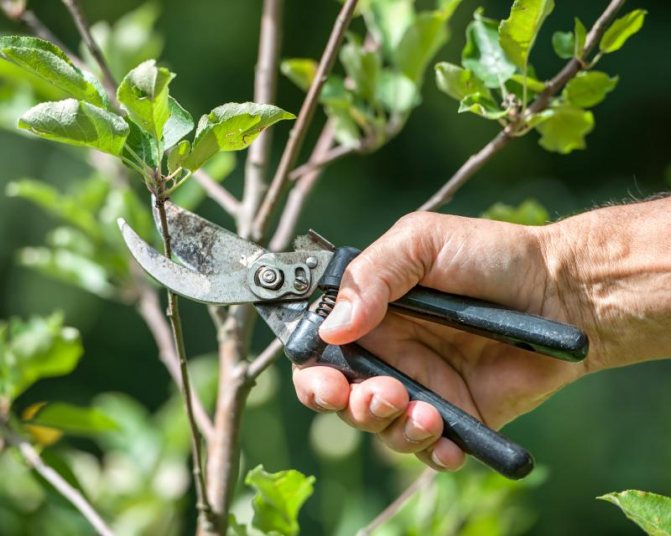
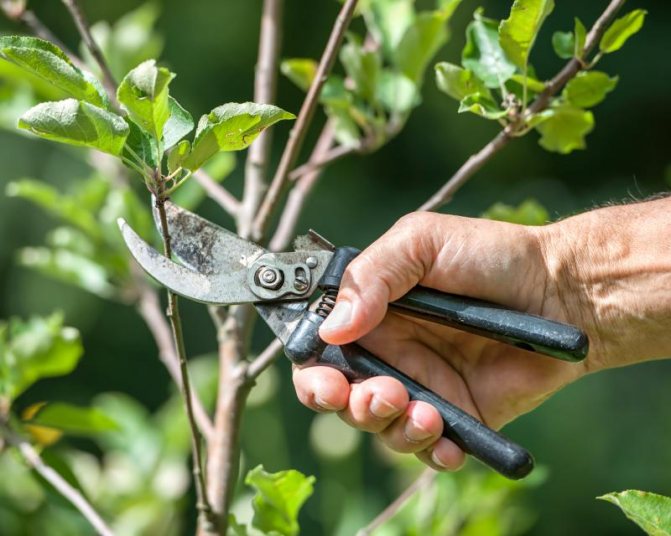
In the summer, they pinch crooked branches to stop their growth. It is also necessary to cut off the stalks of the cherry, which thicken the crown. Remove excess root suckers. In July, cherries are fed with phosphorus and potassium; in August, organic matter is introduced – mullein or diluted bird droppings.
Fallen leaves are destroyed, because pests hibernate under them. The tree trunk and skeletal branches are whitened to prevent the growth of microorganisms.
Interesting!
At the first frost, the area around the trunk is covered with a layer of peat or mulch, and small plants are wrapped in burlap or covered with spruce branches. Artificial covering materials cannot be used for wintering, because the tree will begin to rot and get sick.
Disease resistant
High humidity, typical for the Moscow region, increases the risk of infection with fungal infections. Among the species resistant to coccomycosis and moniliosis, there are:
- Homeland. In addition to excellent immunity, sweet cherry is characterized by a quick entry into fruiting, unpretentiousness to growing conditions. Large fruits of a red dark shade have a beautiful appearance, a refreshing taste.
- Chermashnaya. The seedling is characterized by an early ripening period of fruit ripening. A medium-sized plant produces yellow sweet and sour berries at the age of 4-5 years. In addition to immunity, the advantage of the variety is its high productivity.
- Household Yellow. Cherries are characterized by large yellow fruits that have a sweet taste with sourness. The hybrid is distinguished by excellent yield, early maturity, but low transportability. The advantages of the tree are self-fertility, disease resistance.
Homeland
Strong immunity is also characteristic of Tyutchevka, Iput, Bryanskaya Rozova, Ovstuzhenka.
Sweet cherry: the main diseases of culture
Cherry has fewer diseases than other stone fruits, but the main diseases of the culture are coccomycosis and cherry moniliosis.
Moniliosis occurs when plants are infected with the pathogenic fungi Monilla cinerea. With the spread of the disease on a cherry tree, branches and leaves dry out, as well as rotting of fruits. The infection quickly spreads along the crown of the tree, especially with thickened plantings in low and damp places. Cool weather and frequent rainfall contribute to the disease.
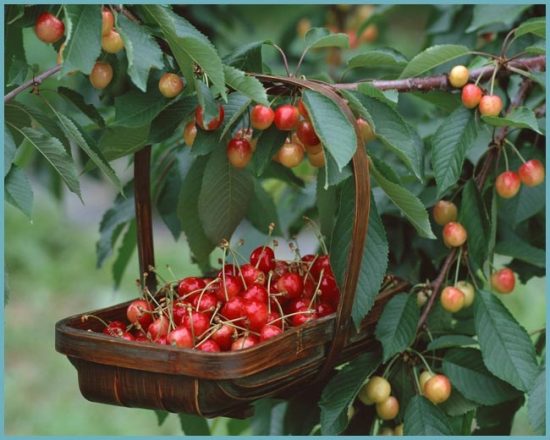
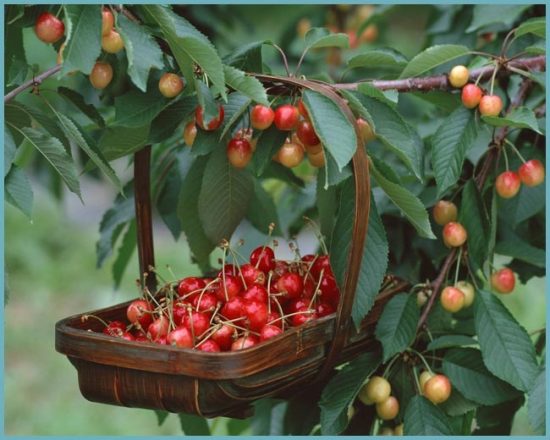
Coccomycosis – infection with the fungus Coccomyces hiemalis manifests itself on the leaf blades in the form of merging spots of small red dots. The infection infects plants in inclement weather. The leaves are affected by infections, gradually turn brown and fall off.
To fight infections, plants are treated with Horus at the rate of 30 g per bucket of water.
Advice! Soap should be added to the drug solution to form a thick foam. Spraying begins on the inside of the leaves.
Affected parts of diseased plants should be burned to prevent the spread of infections.
Of all the pests, the most malicious for sweet cherry is aphids – pest control is carried out with the help of special preparations.
Peculiarities of growing
The Moscow region belongs to the regions of risky farming, so it is important to strictly follow the rules for growing cherries:
- Choose a variety adapted to the conditions of the middle lane.
- In order for the plant to begin normal vegetation in the summer, the planting period should be at the end of April. If you plant a tree in the fall, then it will not have time to properly root.
- It is better to plant sweet cherries in an area protected from the wind with good illumination.
- Suitable soil for culture is black soil, medium loam or sandy loam, with an acidity of 5,5-6,0 pH.
- The planting site should not be located in the lowlands, as the culture is susceptible to moisture stagnation at the roots.
- Compliance with the planting scheme 4×7 m will allow you to grow a full-fledged tree that does not thicken the garden.
- Neighboring crops in the open field cannot be pears, plums or apple trees, since the plants oppress each other. And the cherry plum and elder planted nearby will protect the cherry from aphids in spring and summer.
What and when to feed cherries?
Young plants are quite satisfied with the set of nutrients that are laid in the pits when planting seedlings. In the first year, cherries do not need to be fertilized.
In the following years of cultivation, cherries need additional dressing in spring and autumn, while in the spring they apply fertilizers that stimulate growth – nitrogen. Potash and phosphorus compounds are introduced in autumn.
Advice! An overdose of nitrogen fertilizers leads to uncontrolled growth of the crown, which has a bad effect on future crops.
Further Care
Cherry seedlings need regular maintenance after planting. Plants should be watered only when necessary at the rate of 40 liters per season. Every spring, the garden is sprayed against insects and major crop diseases.
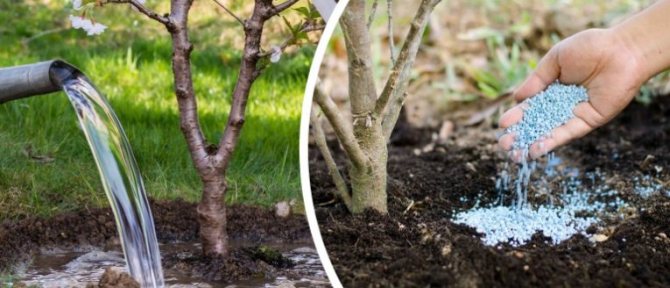
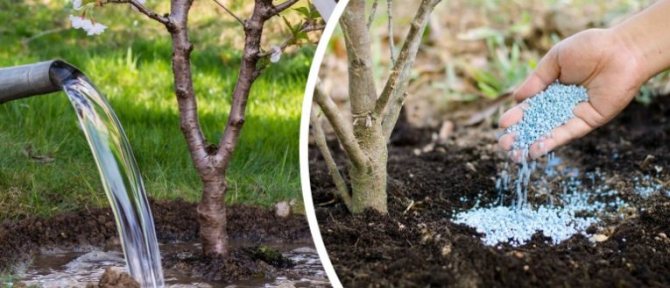
And fertilization is carried out according to the scheme:
- Twice a year for young plants. The first feeding in May, the second in June.
- Mature trees are fertilized 4 times per season. The complex is applied 4 times at regular intervals from May to August.
To improve the persistence of cherries, as well as effective pollination, trees can be grafted with other varieties. The procedure increases winter hardiness and rejuvenates the old tree. The introduction of the cuttings to the stock is carried out in the spring, at an air temperature of + 5 ° C, but before the start of sap flow.
How to choose cherry seedlings and where to buy
The future crop yield and its development depend on what kind of cherry seedling you plant. A healthy seedling should have a well-developed root system, and there should be no damage to the trunk. There must be a trace of vaccination on the trunk.
It is best to buy tree saplings in proven nurseries, one of which is the peasant farm Fruit Orchard. Only here you can buy healthy and strong cherry seedlings at affordable prices with delivery across Russia.
A young seedling in the first years needs to be provided with competent care. One of the most important points is watering, during which you need to remember:
- lack of moisture causes a decrease in yield, and an excess – cracking and rotting of fruits;
- the first plentiful watering is carried out in May, when the plant intensively builds up its green mass;
- the second watering is approximately carried out in June, while the berries are being poured (adult tree): the seedling is watered several times, guided by the weather, so that the soil does not dry out;
- the last abundant watering occurs in the fall (before the cold weather) to help the tree winter favorably;
- it is undesirable to water during the flowering period, when the crop is ripe and in August (it will provoke a strong growth of shoots and reduce winter hardiness);
- to limit the rapid evaporation of moisture and drying out of the soil, it is recommended to mulch the trunk circle.
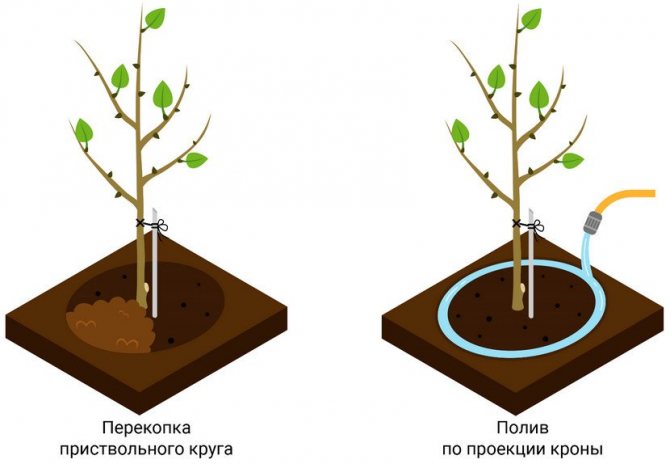
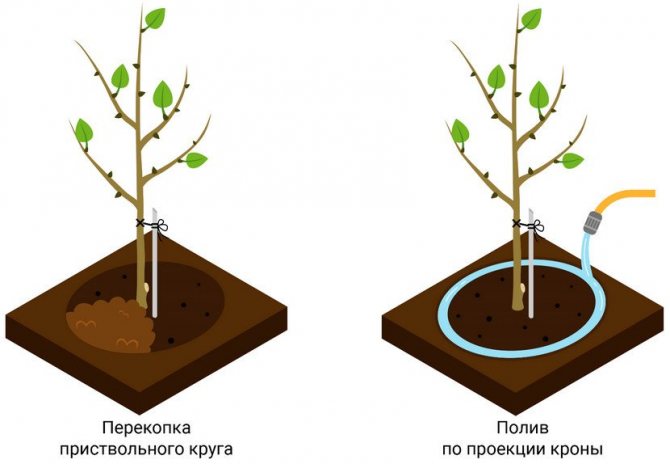
- In the first year of cherry growth, pruning is not carried out in order to enable the young tree to grow stronger.
- In the second year (early spring), 4–5 branches (50 cm long) are left in each tier. You need to try to leave branches that are located at the same distance from each other. The main trunk is cut so that its top is 20 cm above the top of the longest side branch.
- In the third year, the branches of the lower tier are cut to the length of the shortest of them. The second tier is cut 10 cm shorter than the lower one. The main trunk is left 50 cm longer than the branches of the 2nd tier, it must have about 6 buds for the formation of the 3rd tier. At the same time, all branches that grow incorrectly (directed inward or vertically) are cut out.
- In the fourth year, the last stage of formative pruning is carried out. The main trunk is cut to a constant (corresponding to the grade) height. Shoots of the 2nd and 3rd tier are shortened to 80 cm, and the first – to 50 cm. Incorrectly growing shoots are also removed.
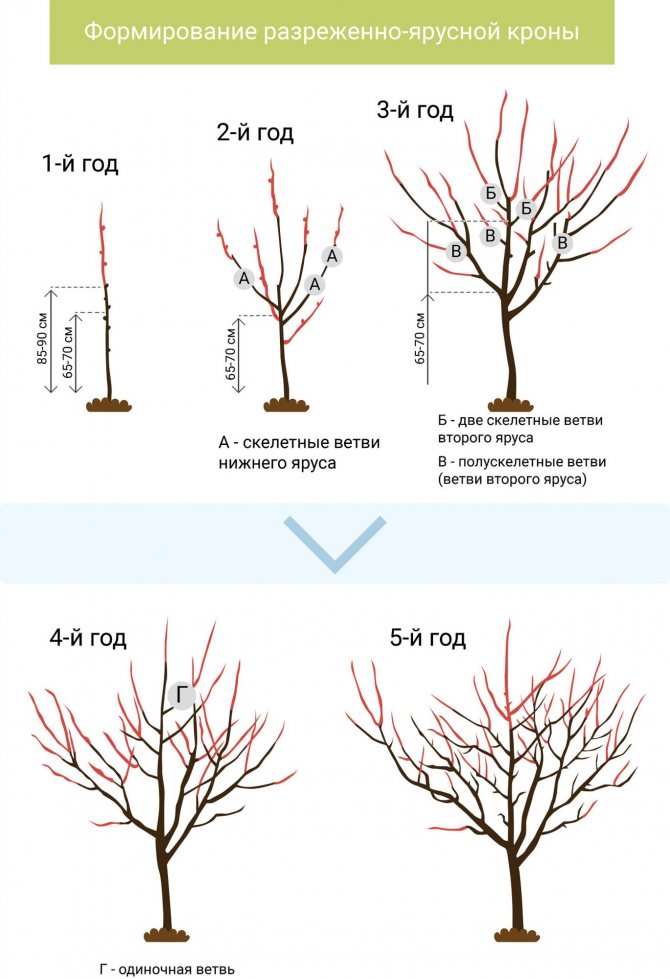
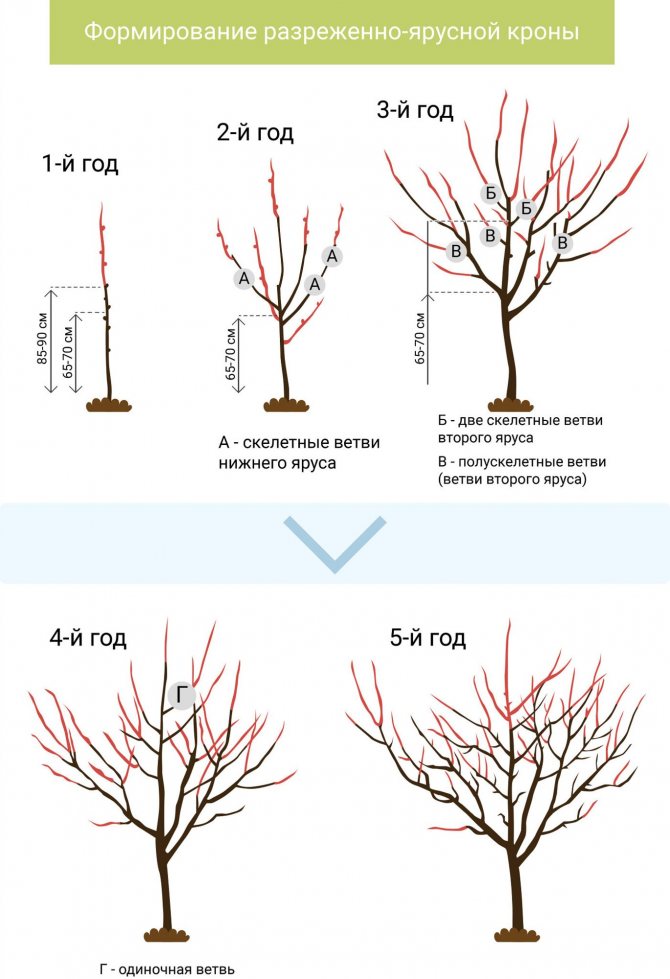
After carrying out all the above measures, a fully formed crown is obtained. And given that the sweet cherry does not show a tendency to thicken the crown, in the future you can limit yourself to minimal pruning (up to 3-4 m in height and about 4 m in the length of side branches).
Important! If root growth grows from the grafting site, then it must be removed at the very base.
As for fertilizing, in the first year the plant has enough nutrients introduced during planting. In the future, regular fertilization is necessary:
- In the 2nd year, the trunk circle is fertilized with urea (120 g per 1 copy), which is embedded 10 cm deep. Before feeding, the plant needs to be watered.
- For the 3rd year, the same fertilizer is used.
- In the 4th year, a circular groove is made along the perimeter of the crown border (up to 25 cm deep). In the spring, along with watering, about 150 g of urea is introduced into it. In the fall, according to the same principle, feeding is carried out with superphosphate (300 g) and potassium sulfate (100 g).
- In the spring of the fifth year, cherries are fed with ammophos (30 g / 10 l), and in autumn 15–20 kg of humus are added.
- In subsequent years, in the spring, 150-200 g of urea are introduced into the circular furrow, and in the fall – 35-40 kg of humus.
We offer you to familiarize yourself with the Best cast-iron stove for a wood-fired bath

